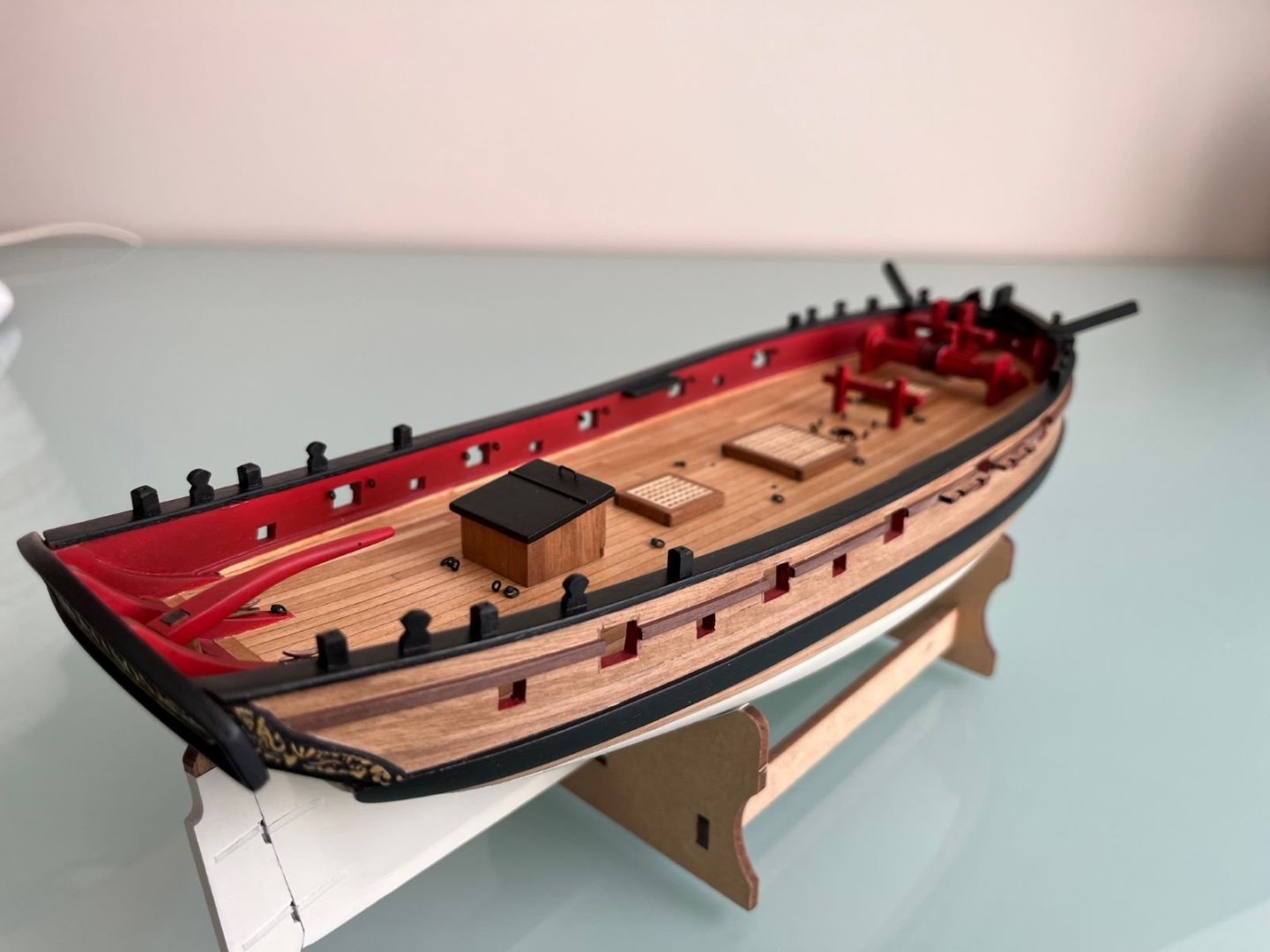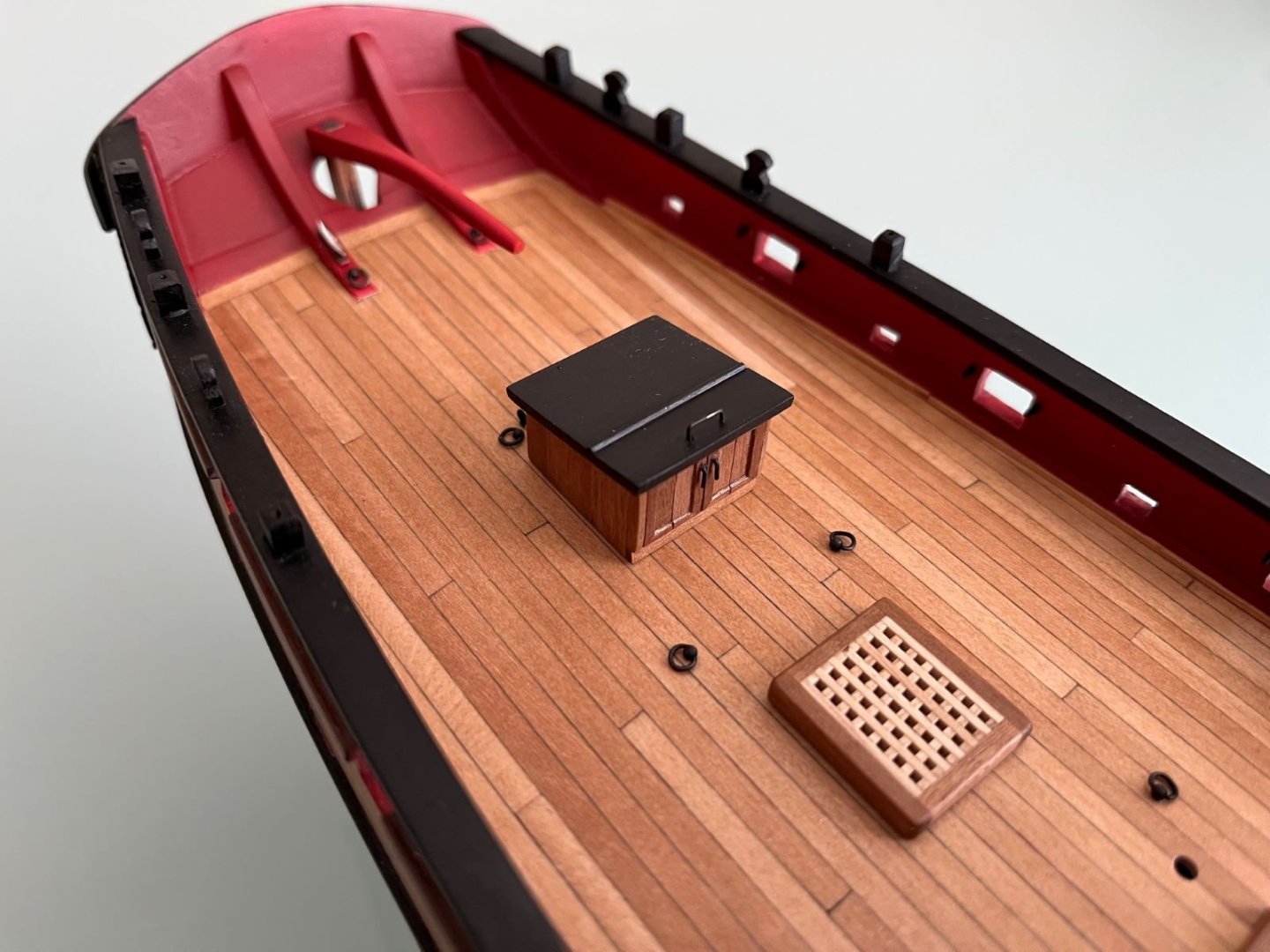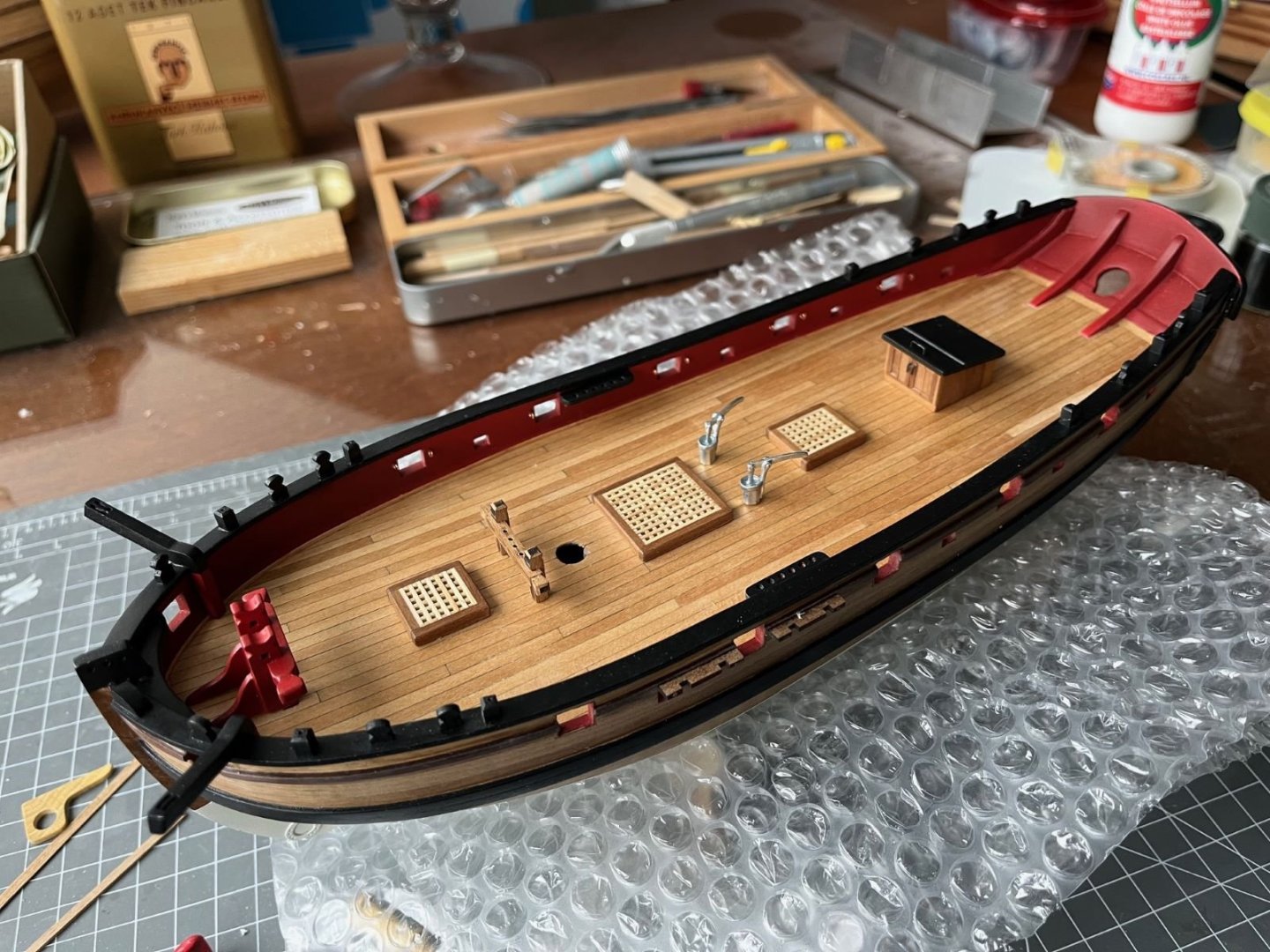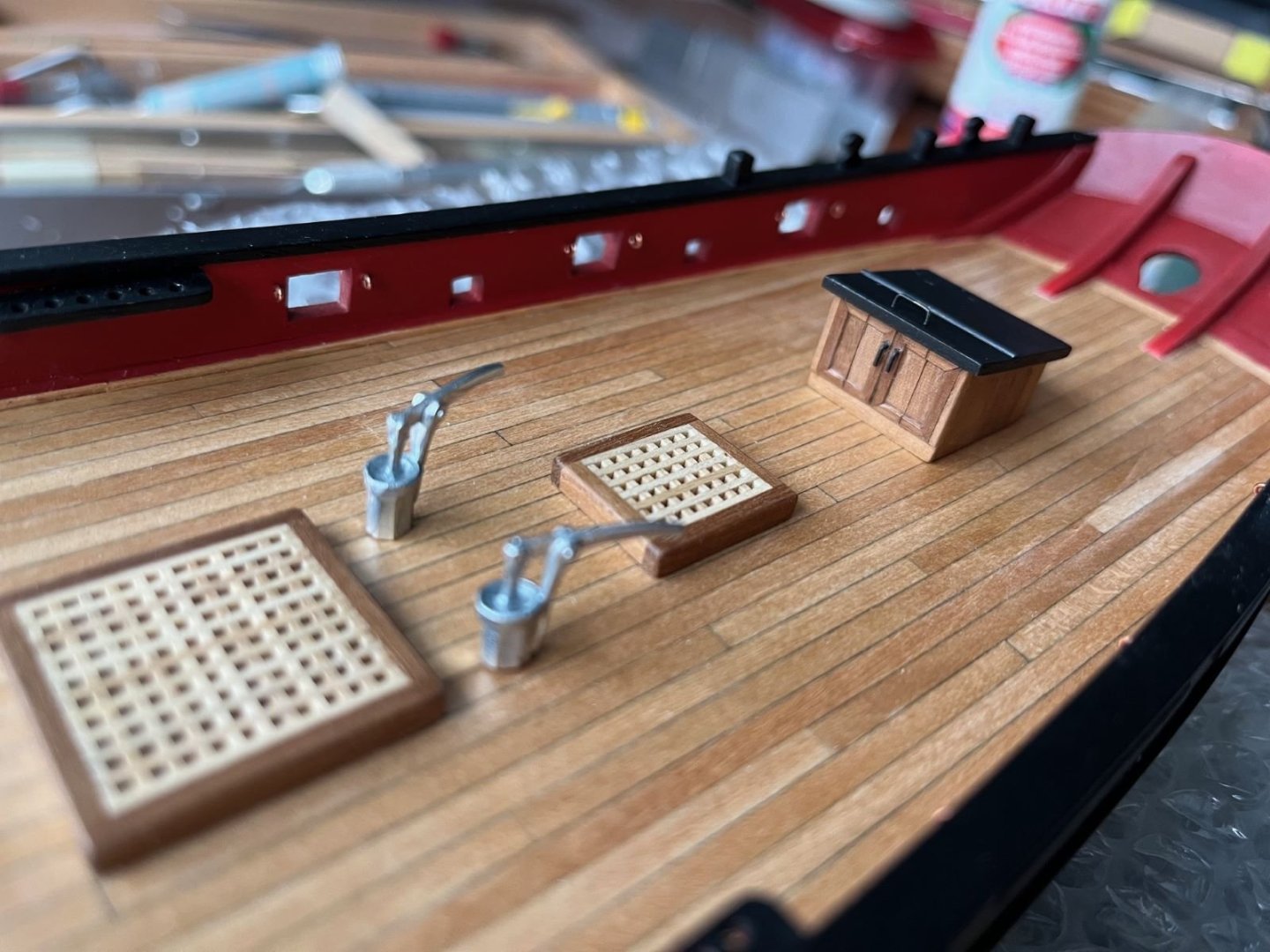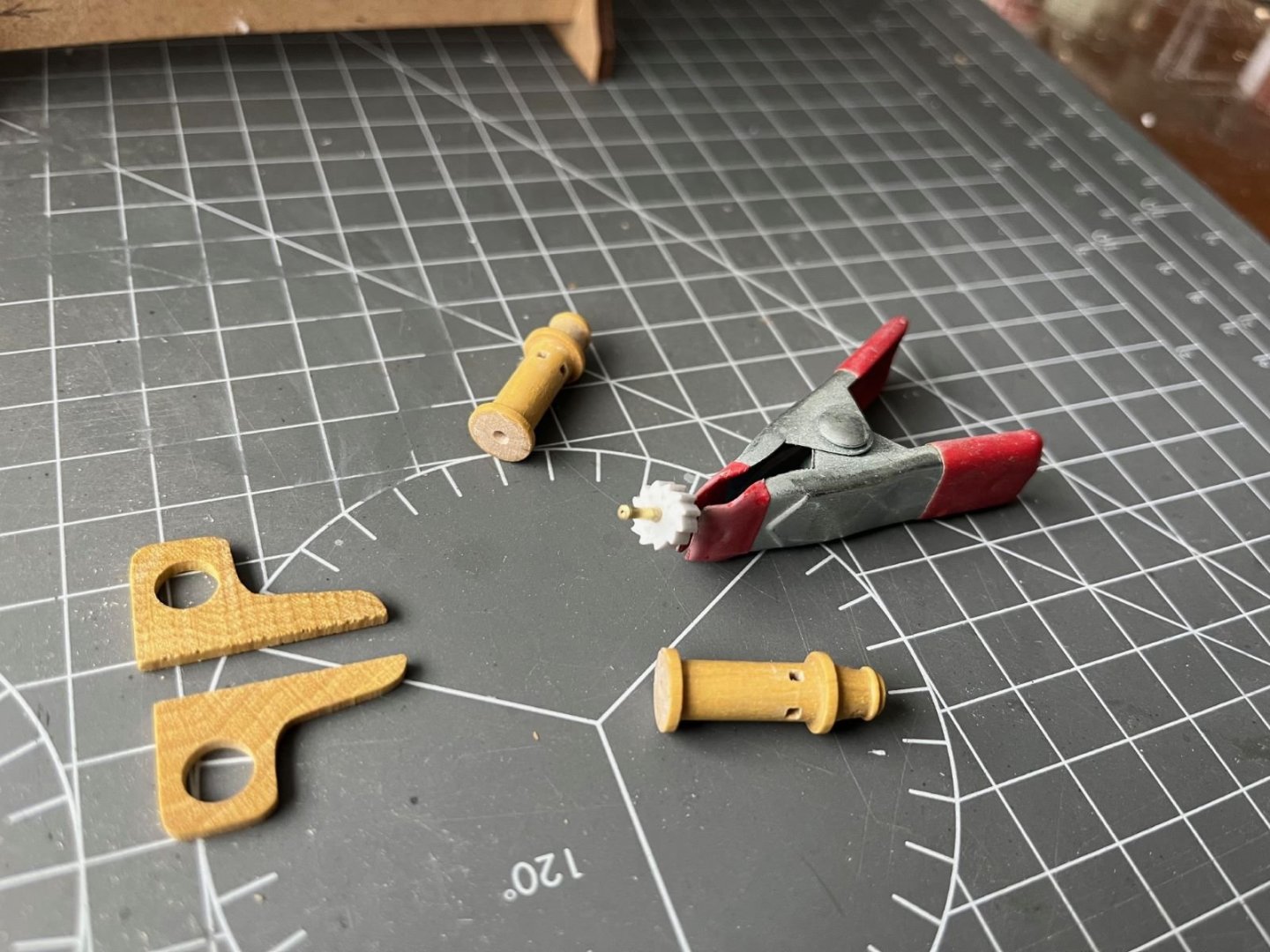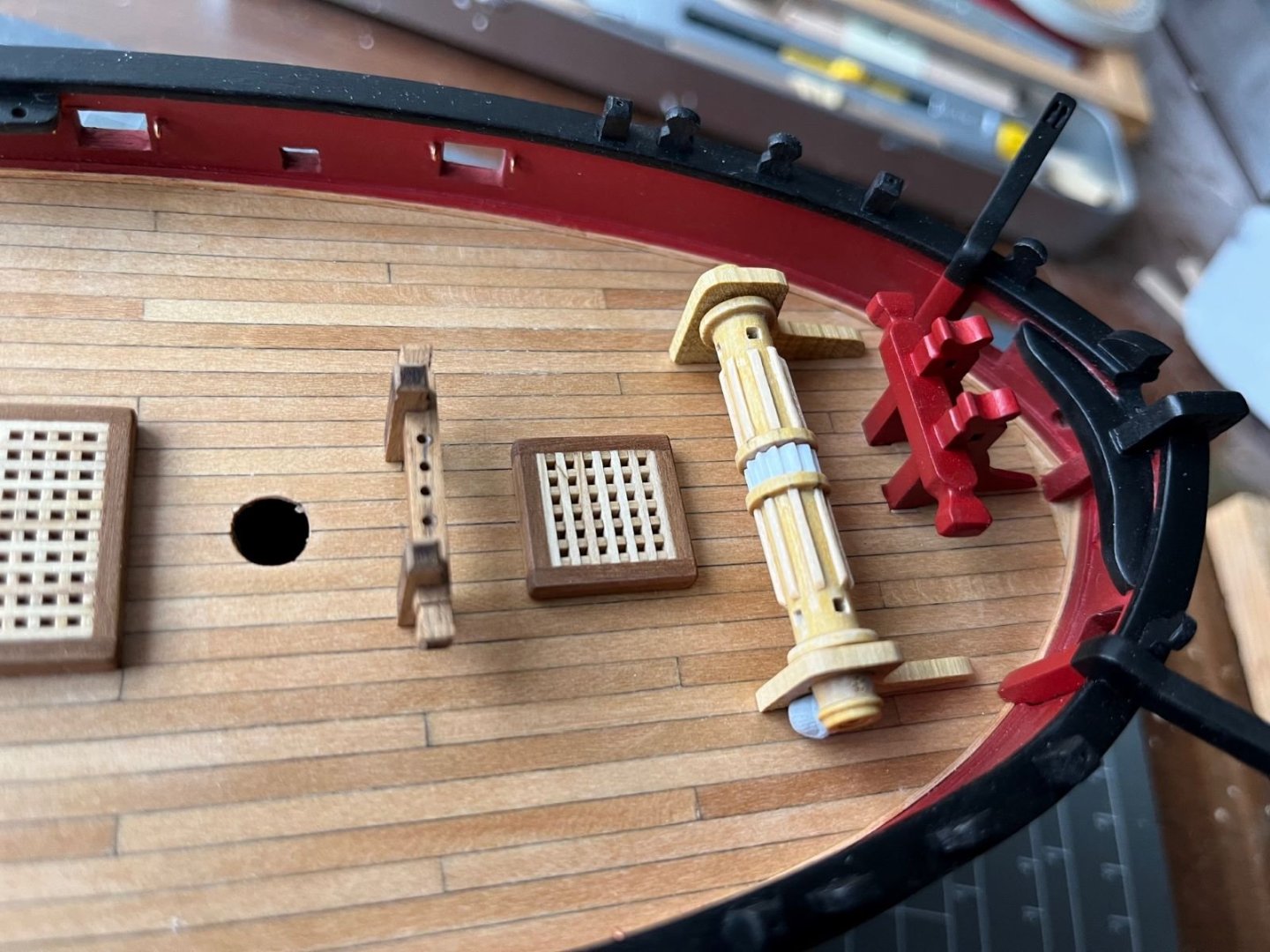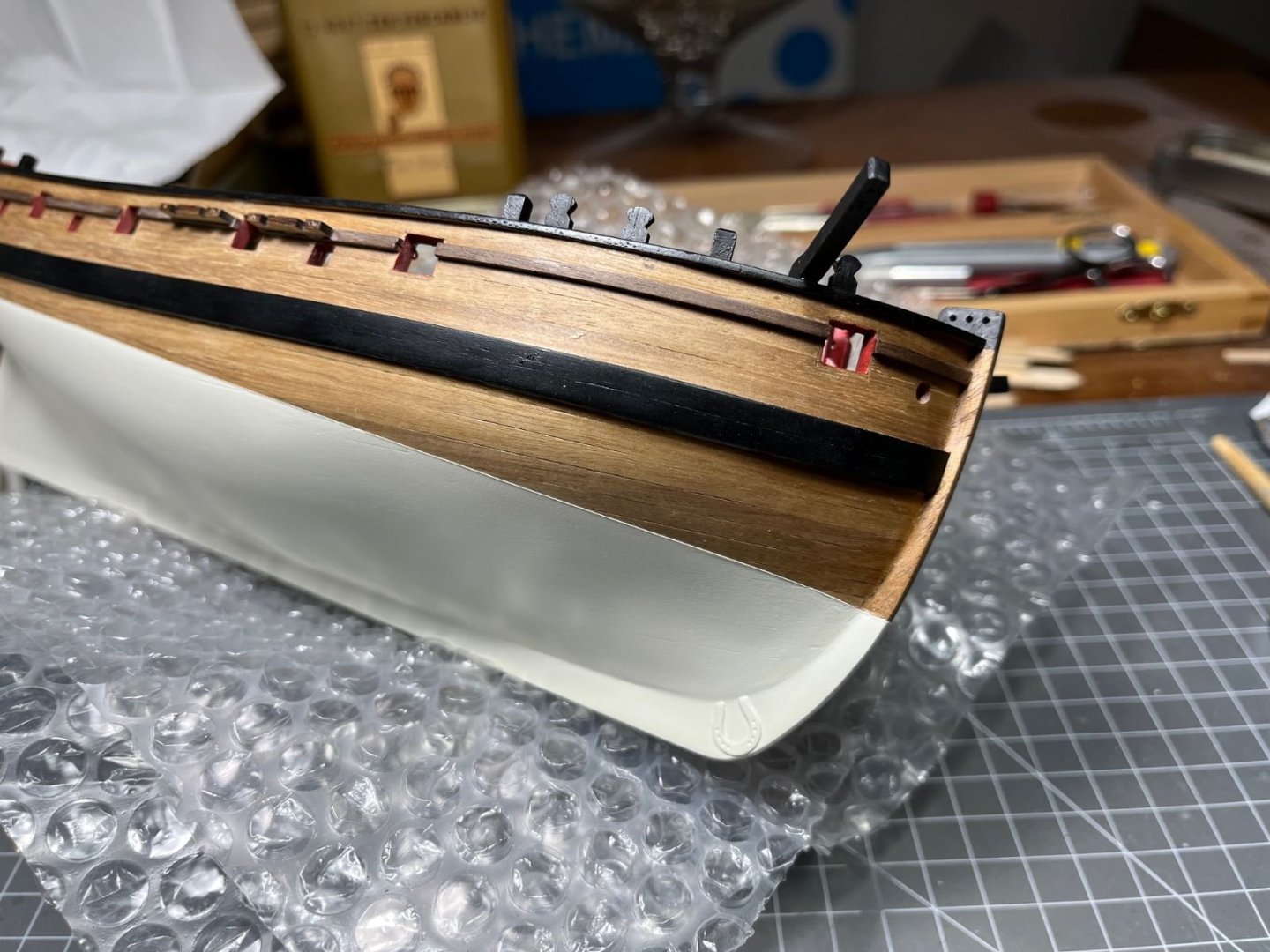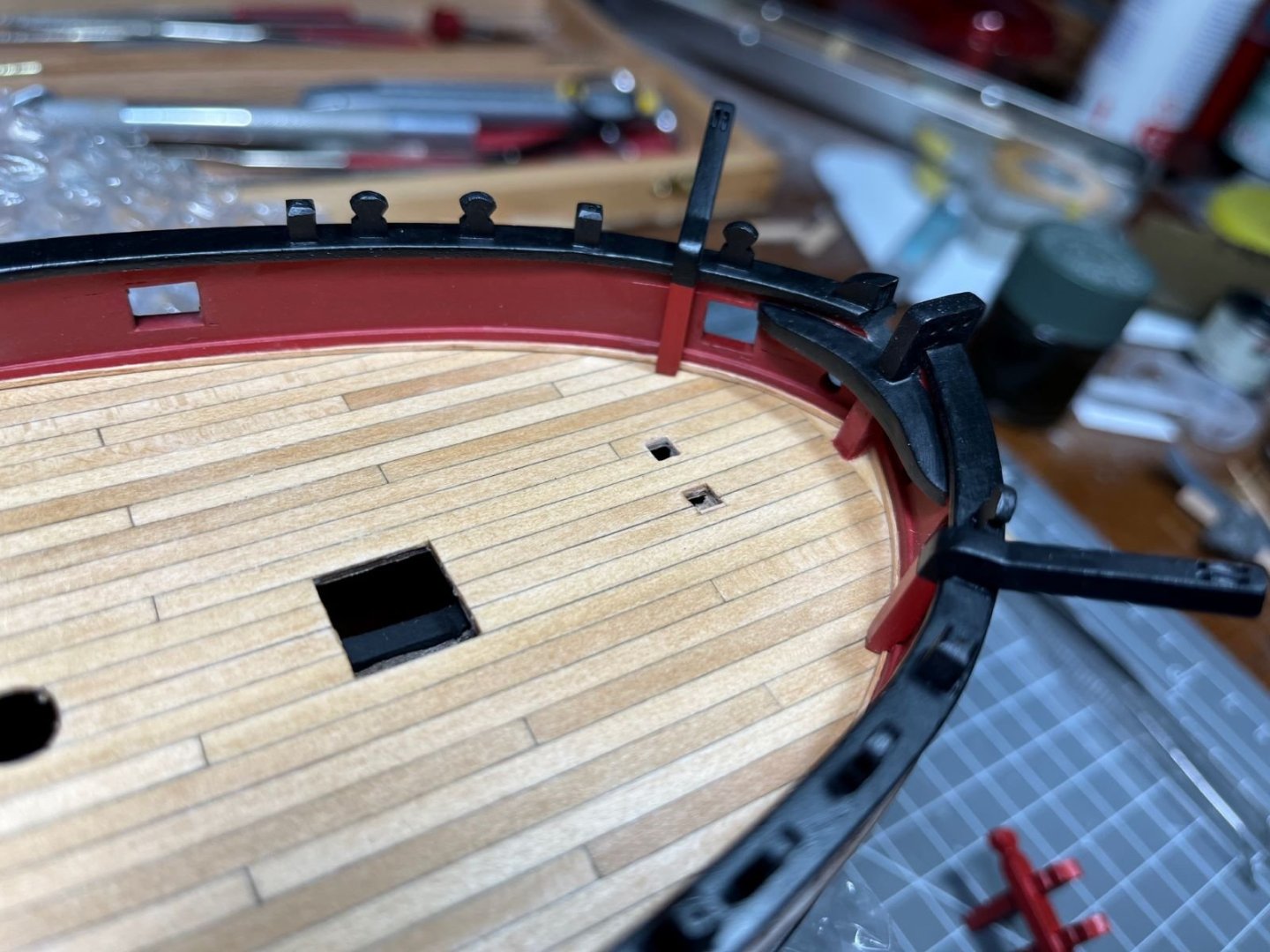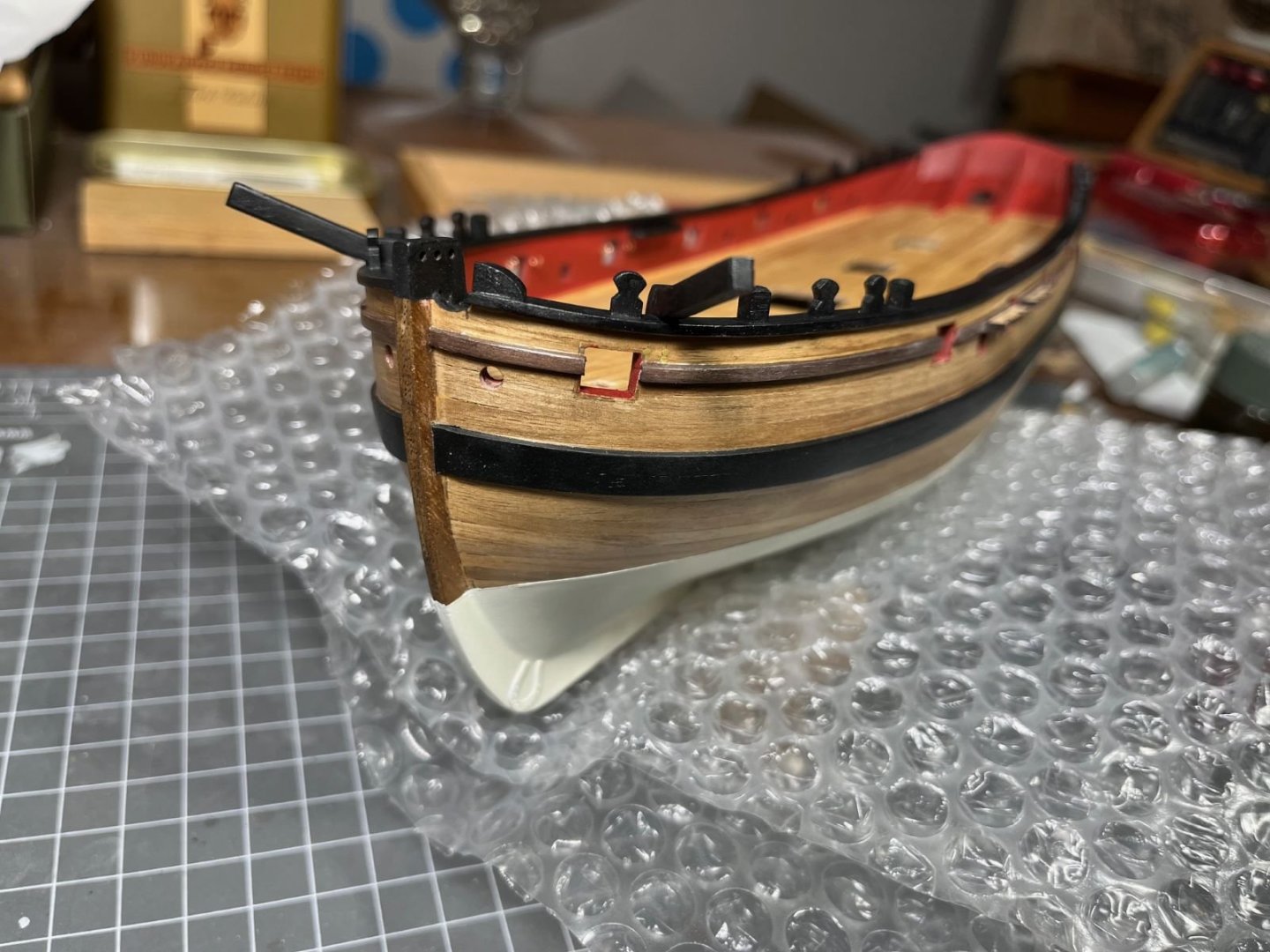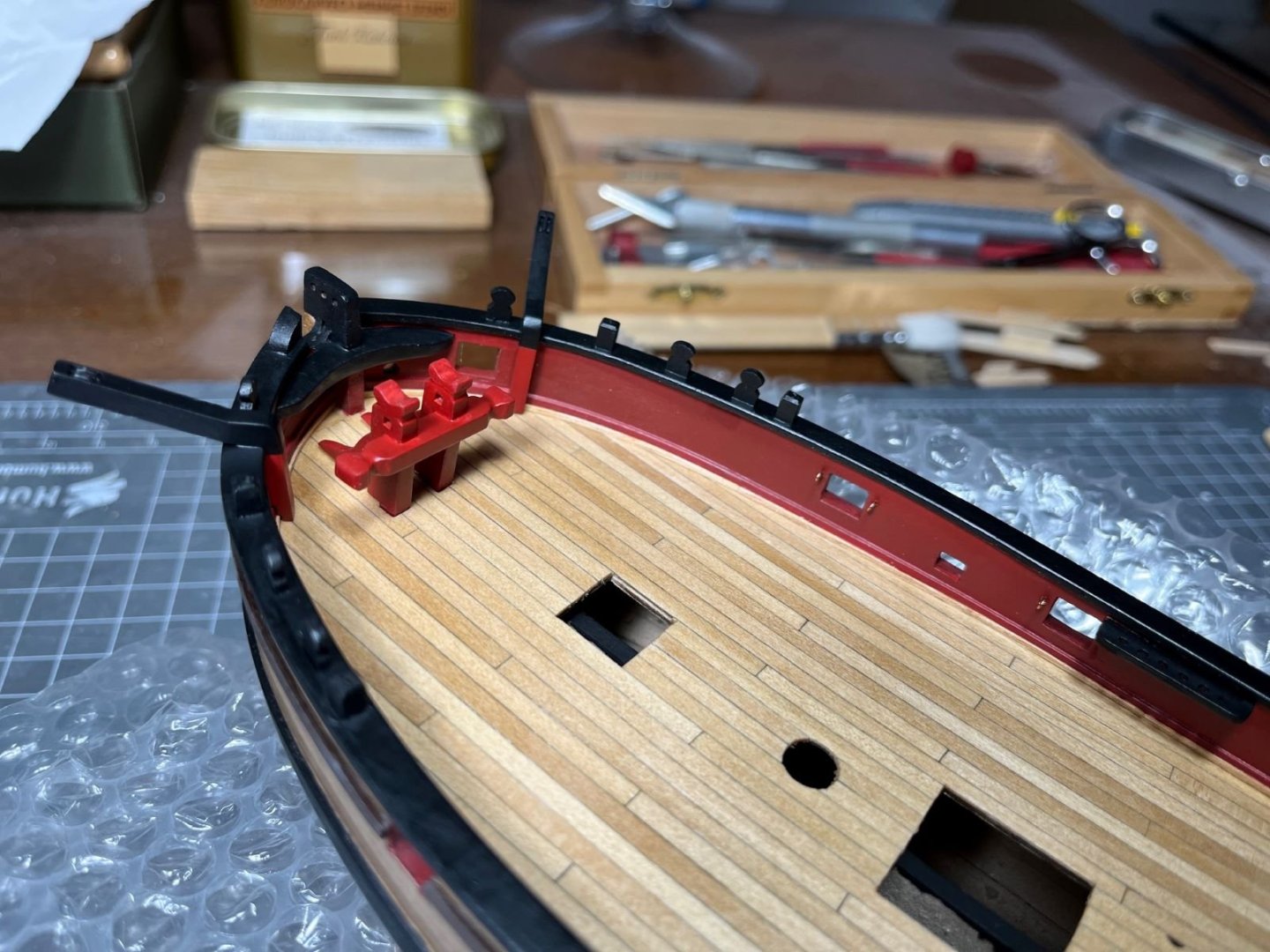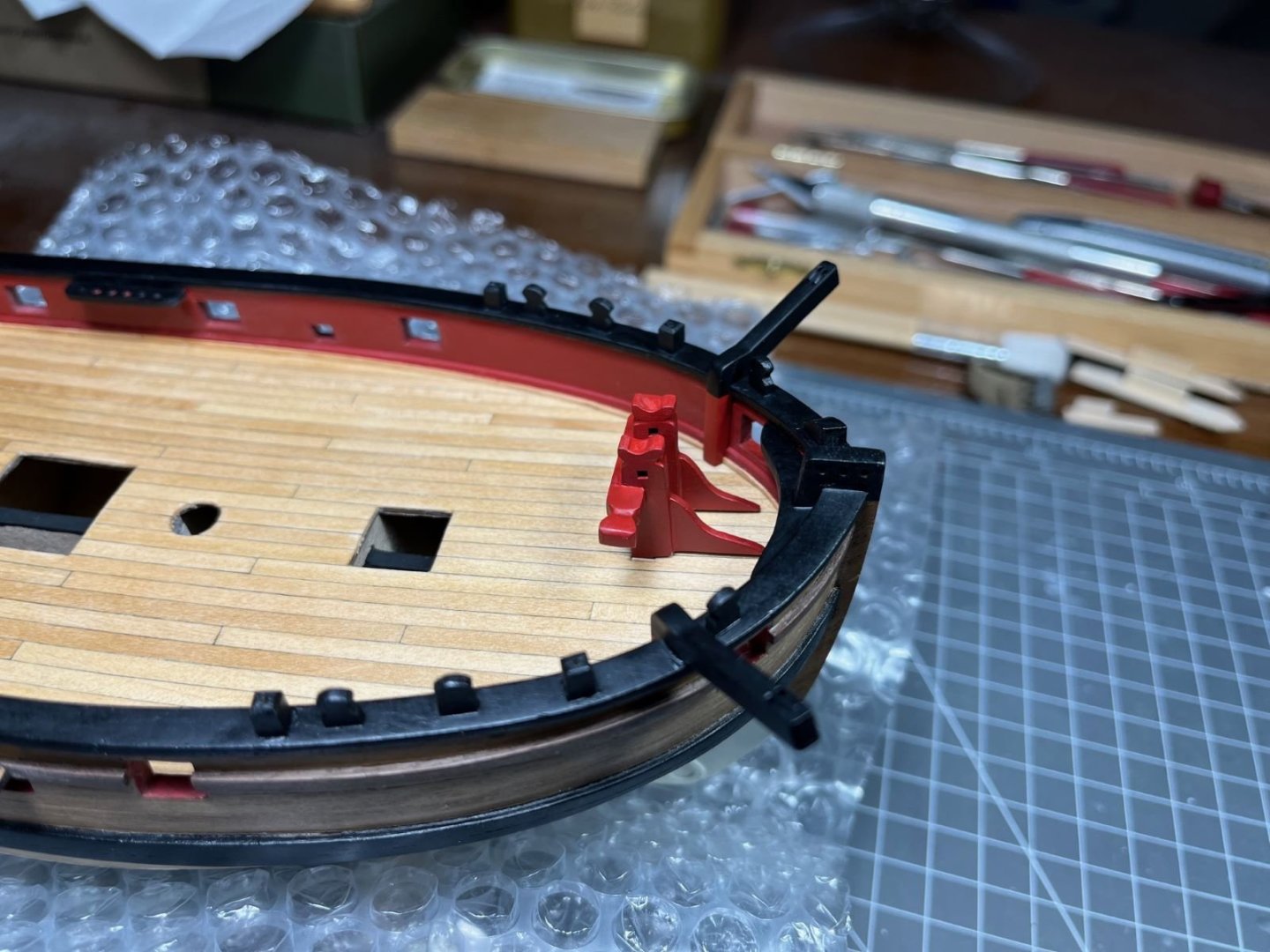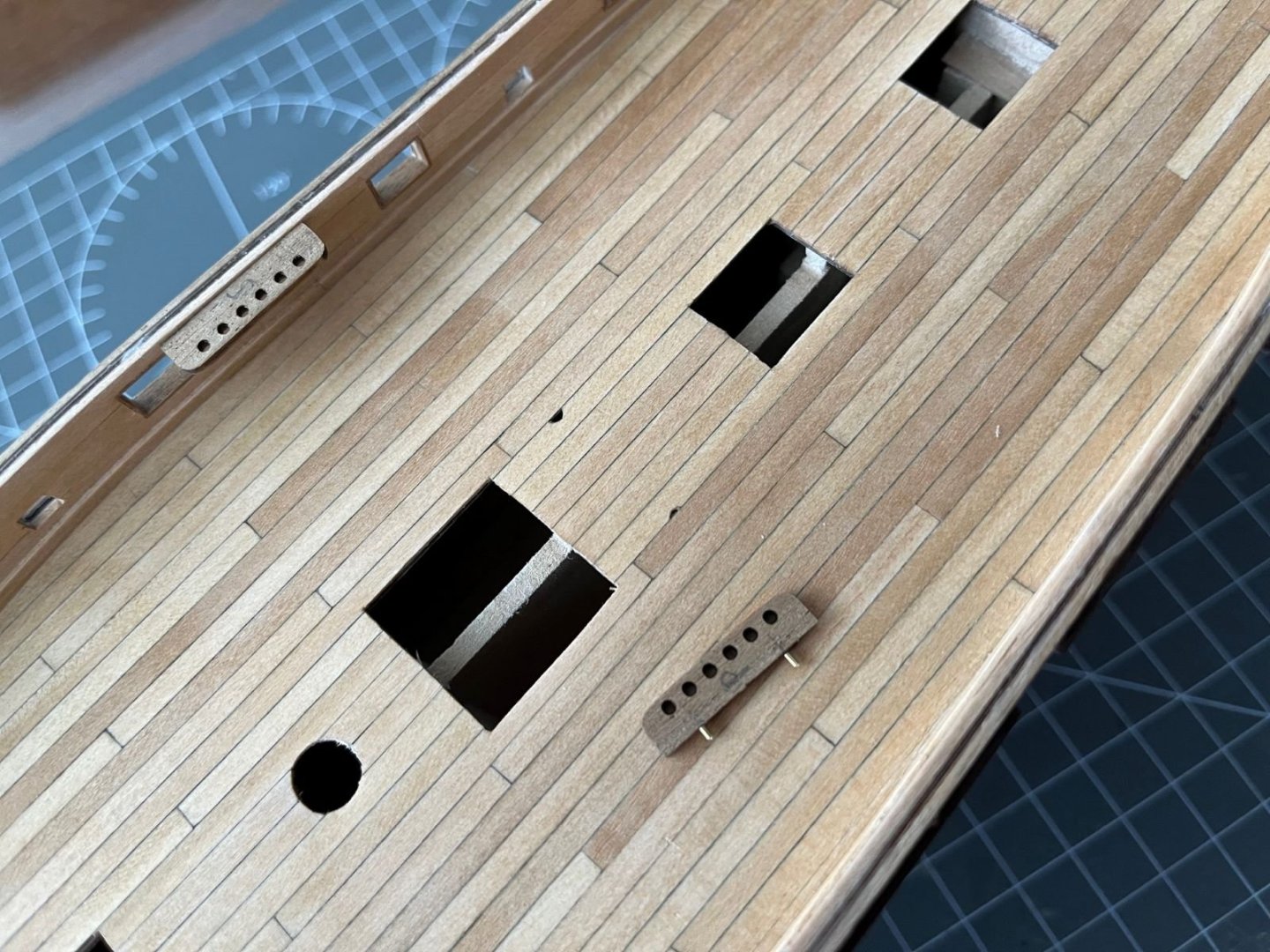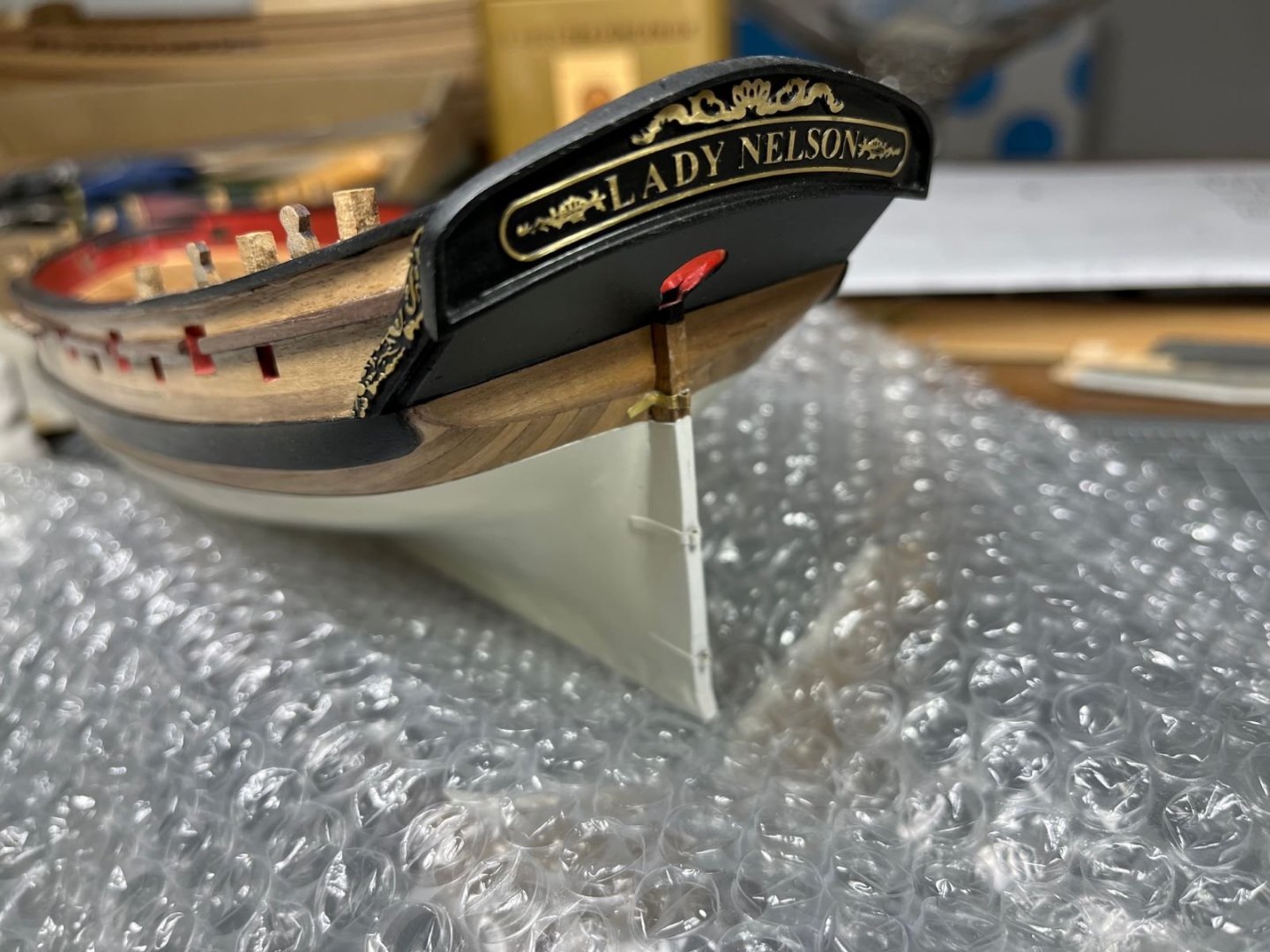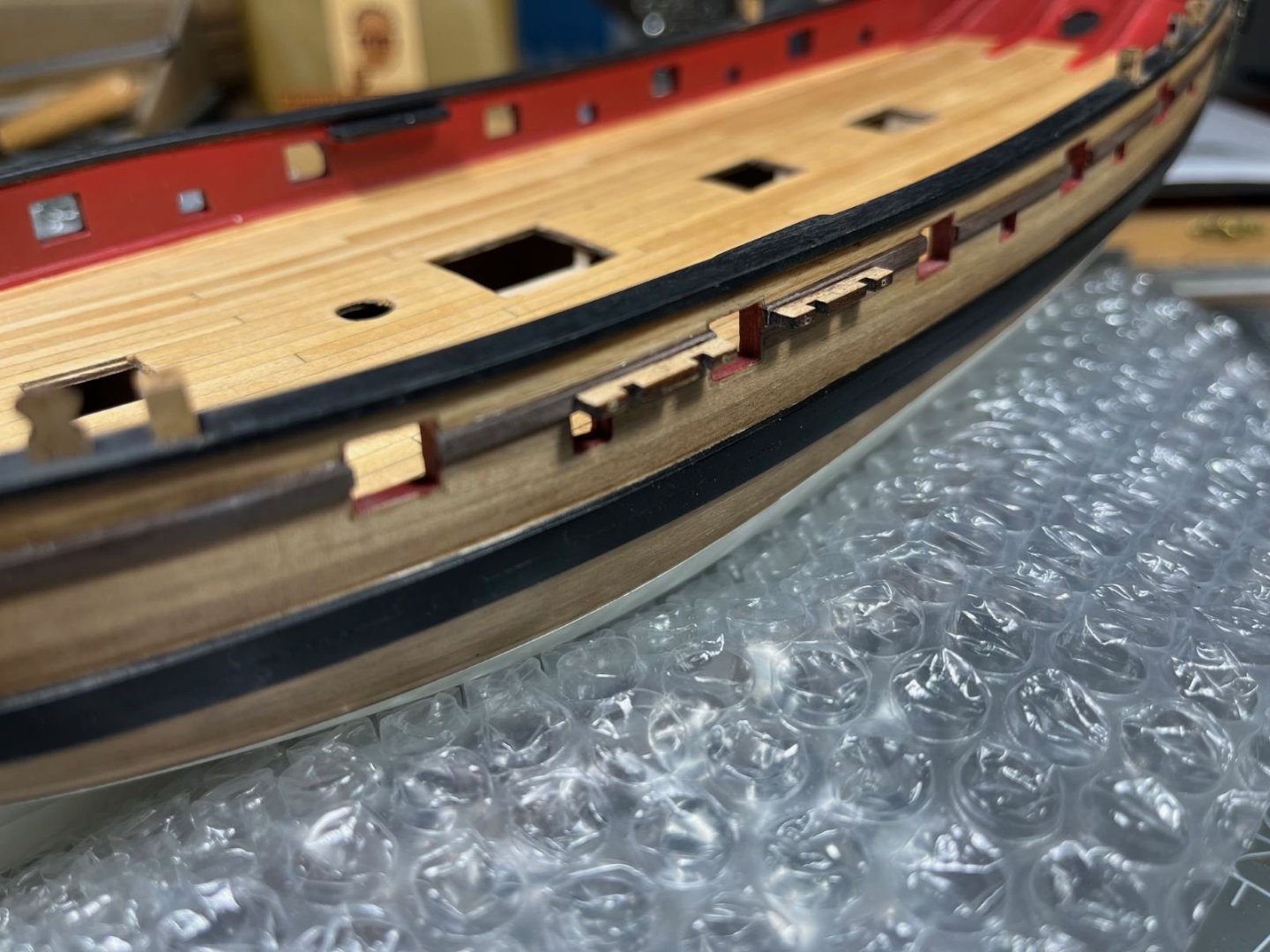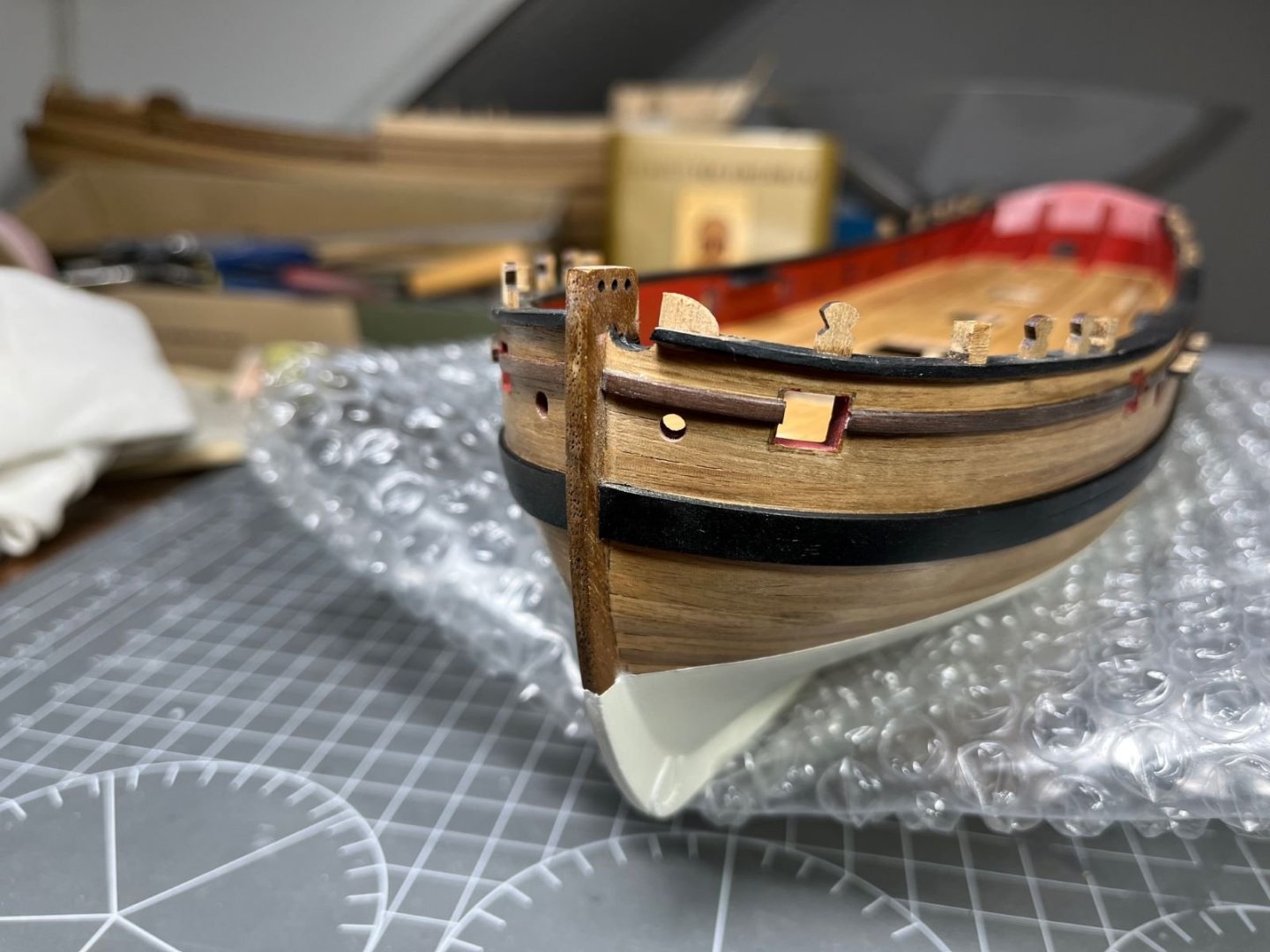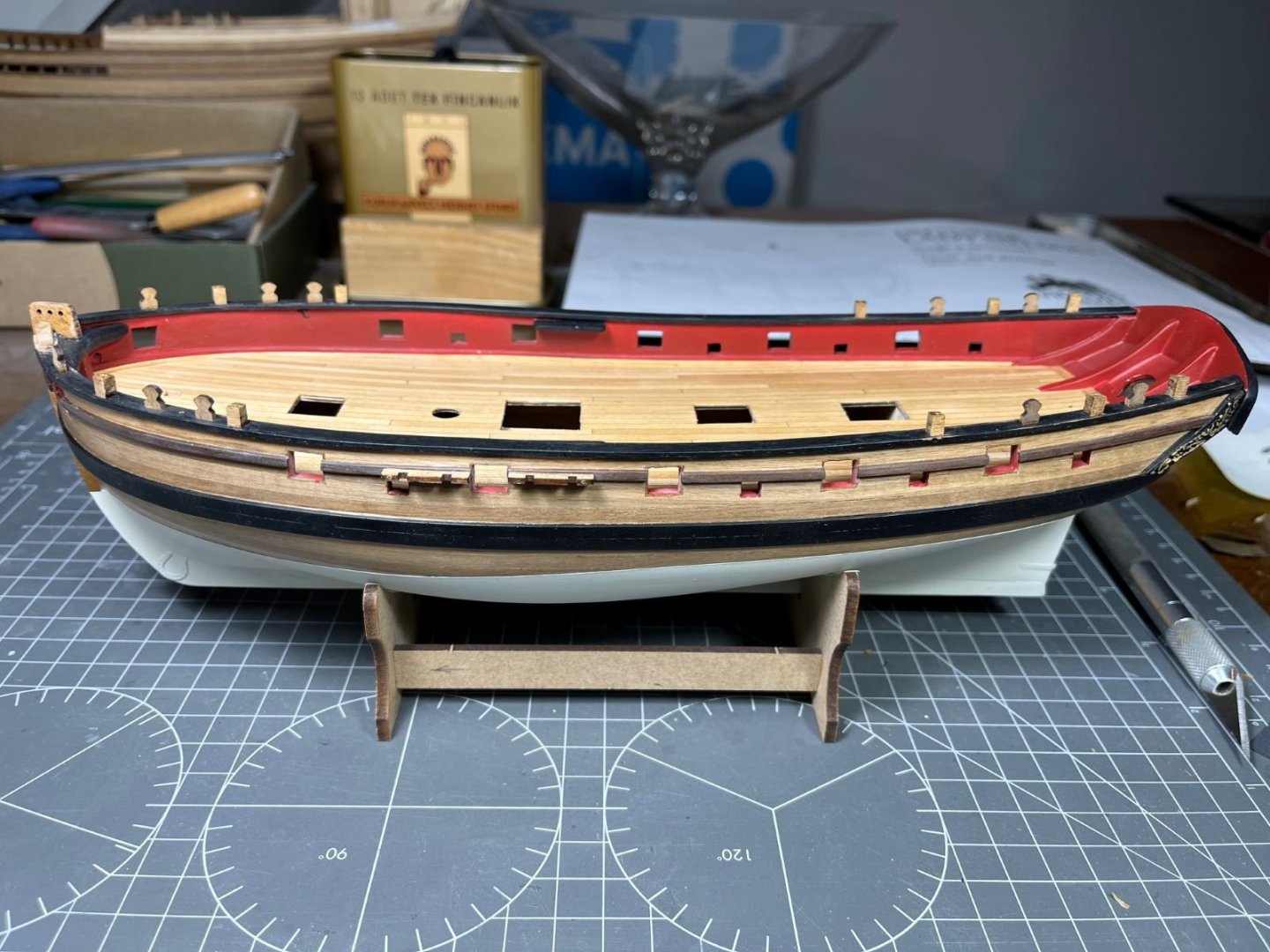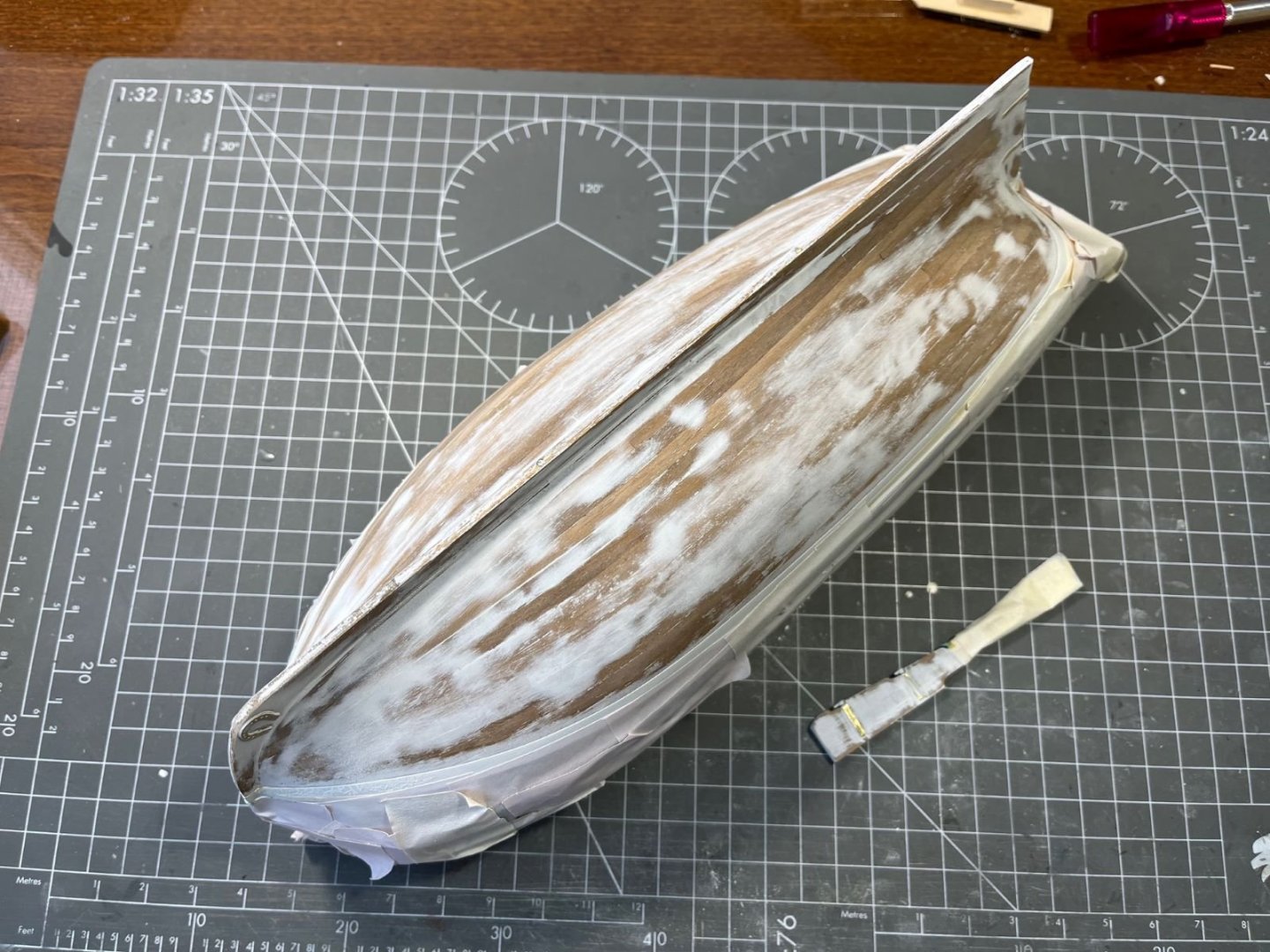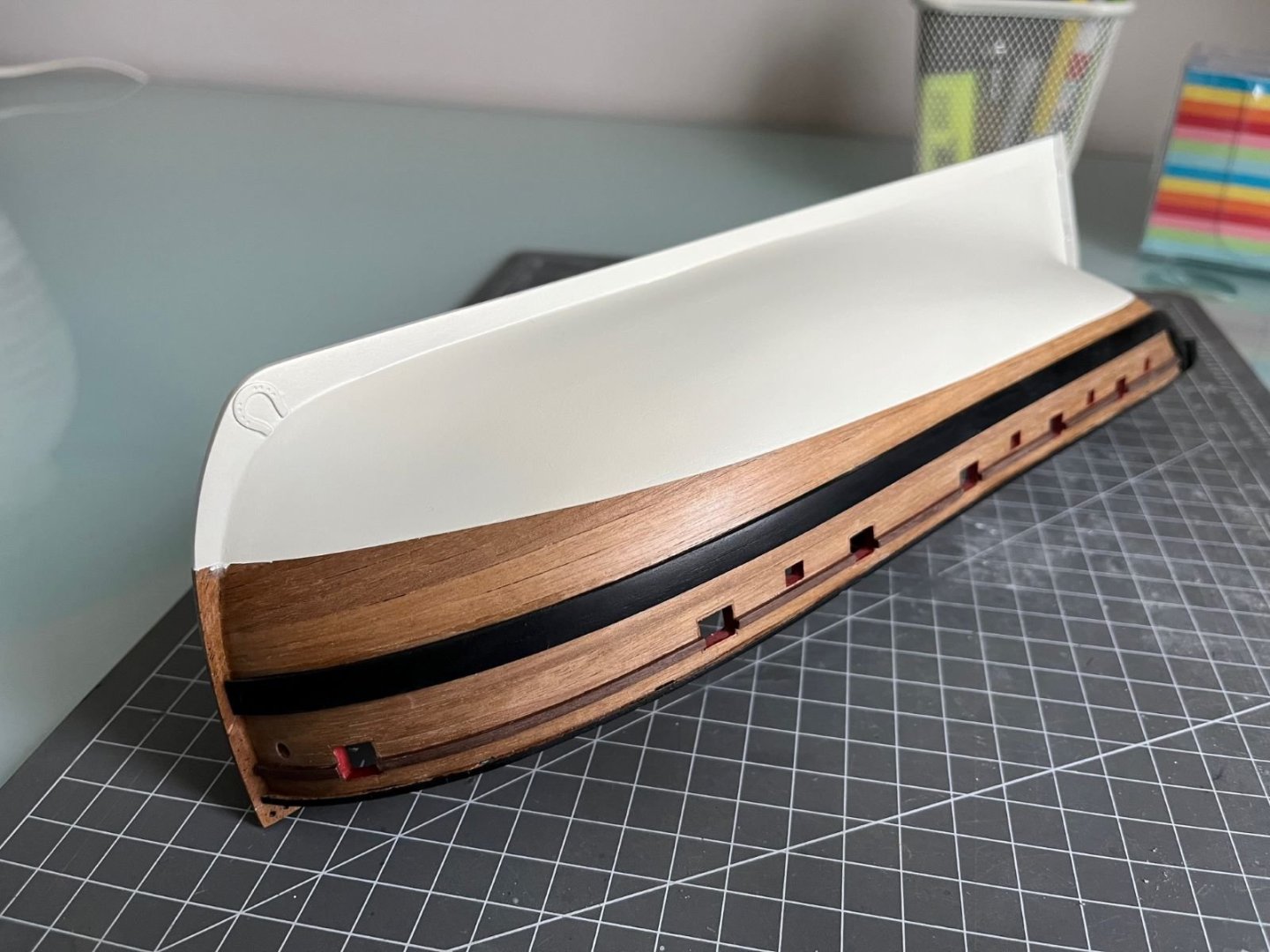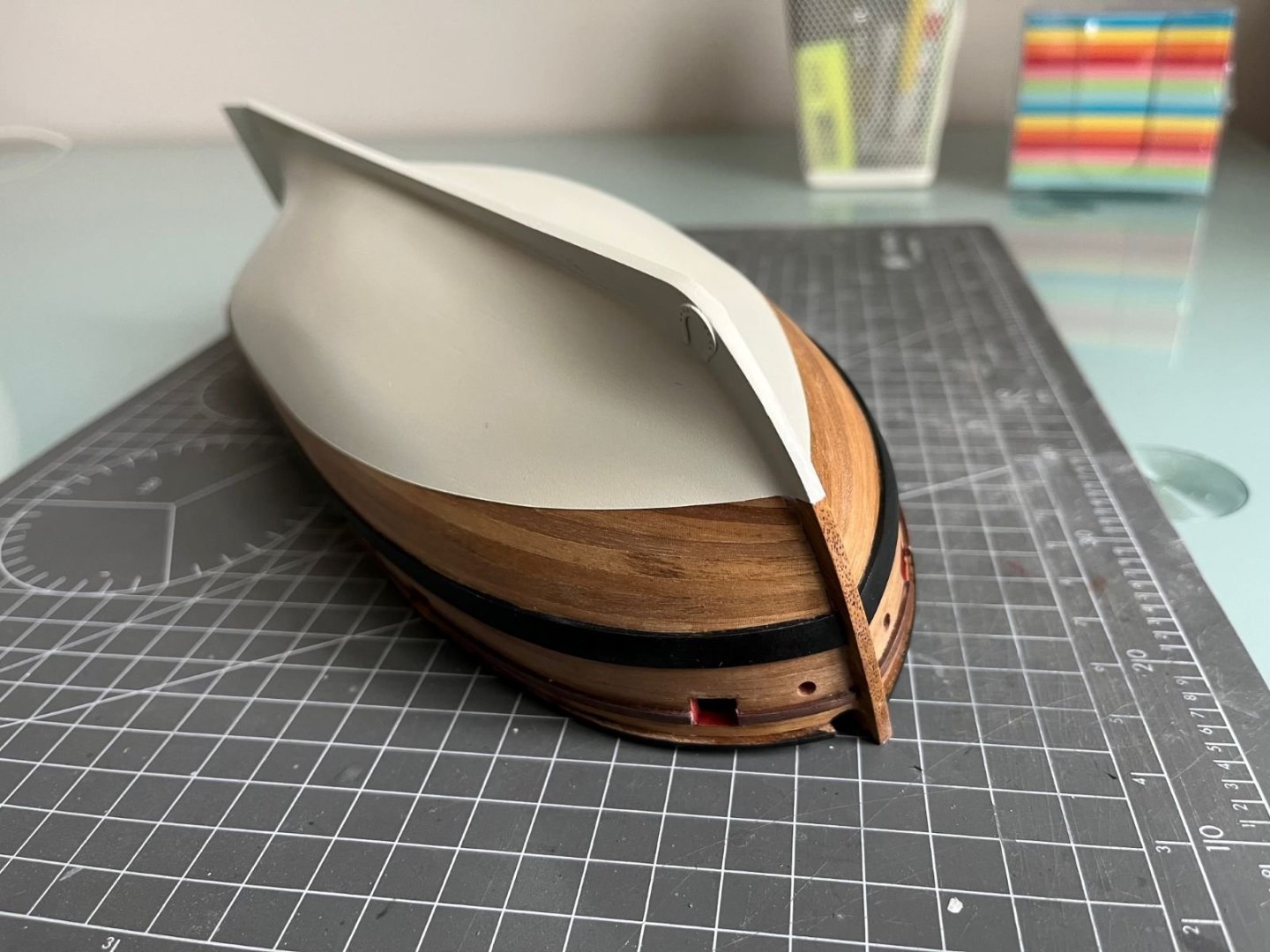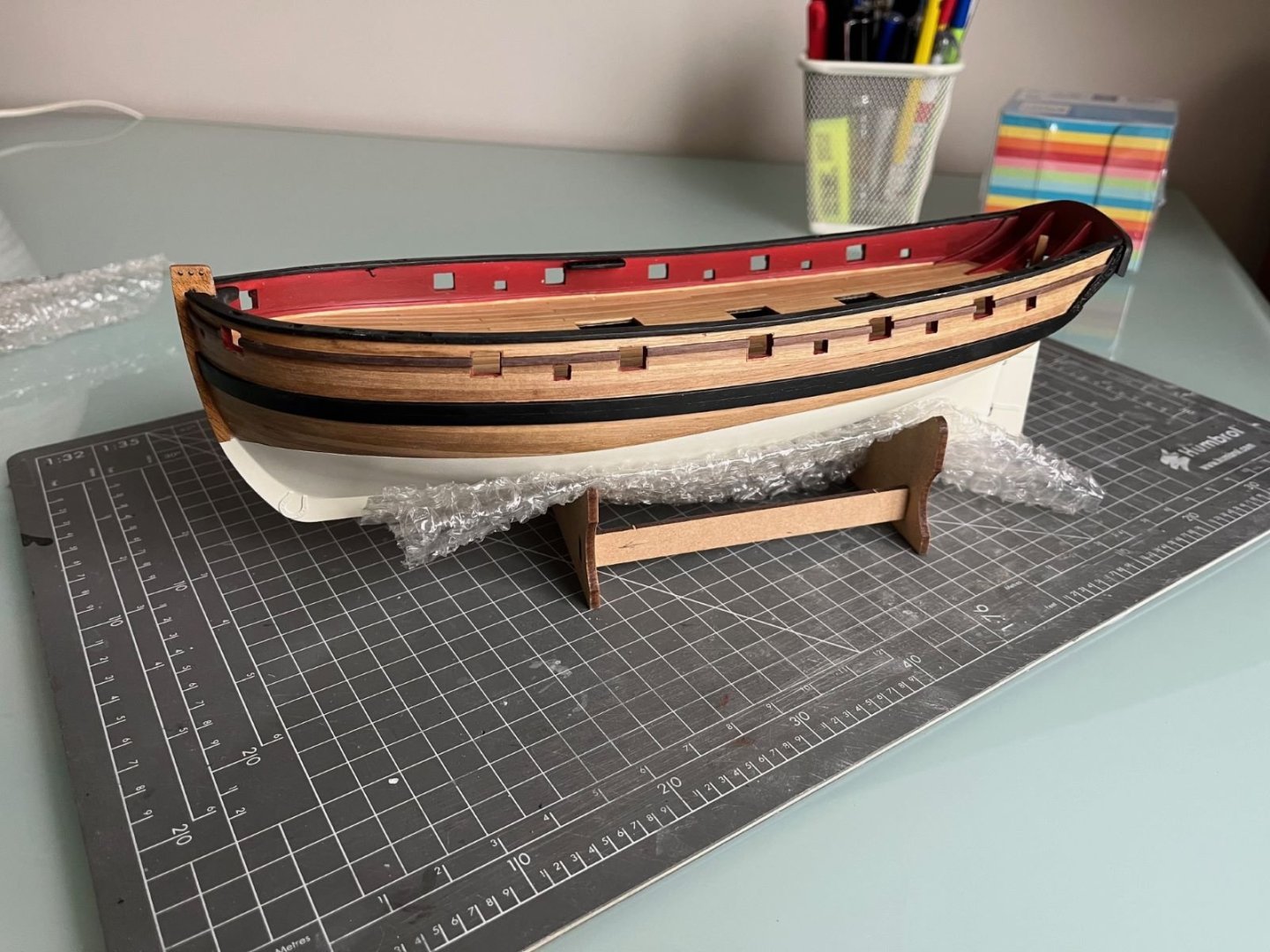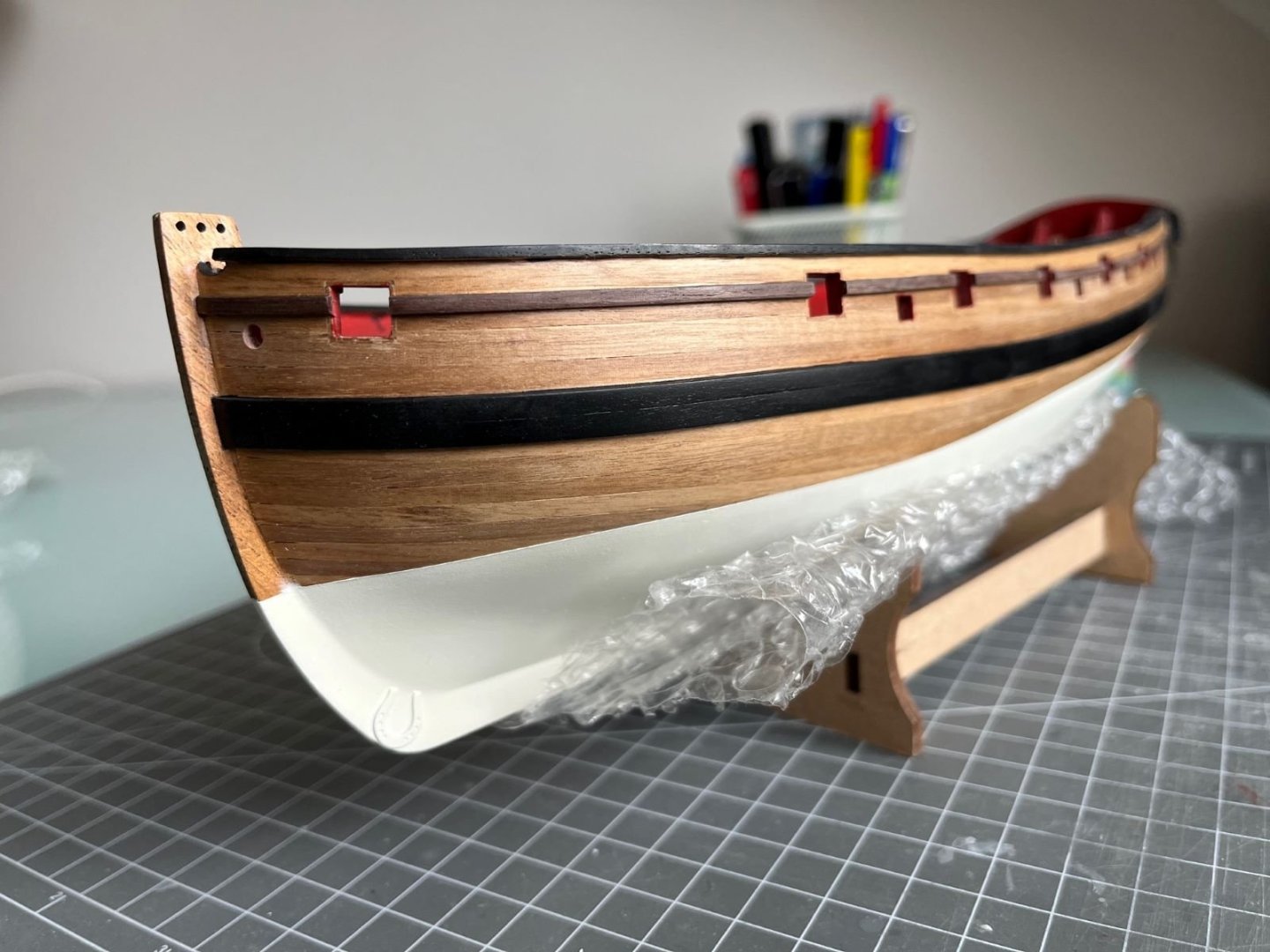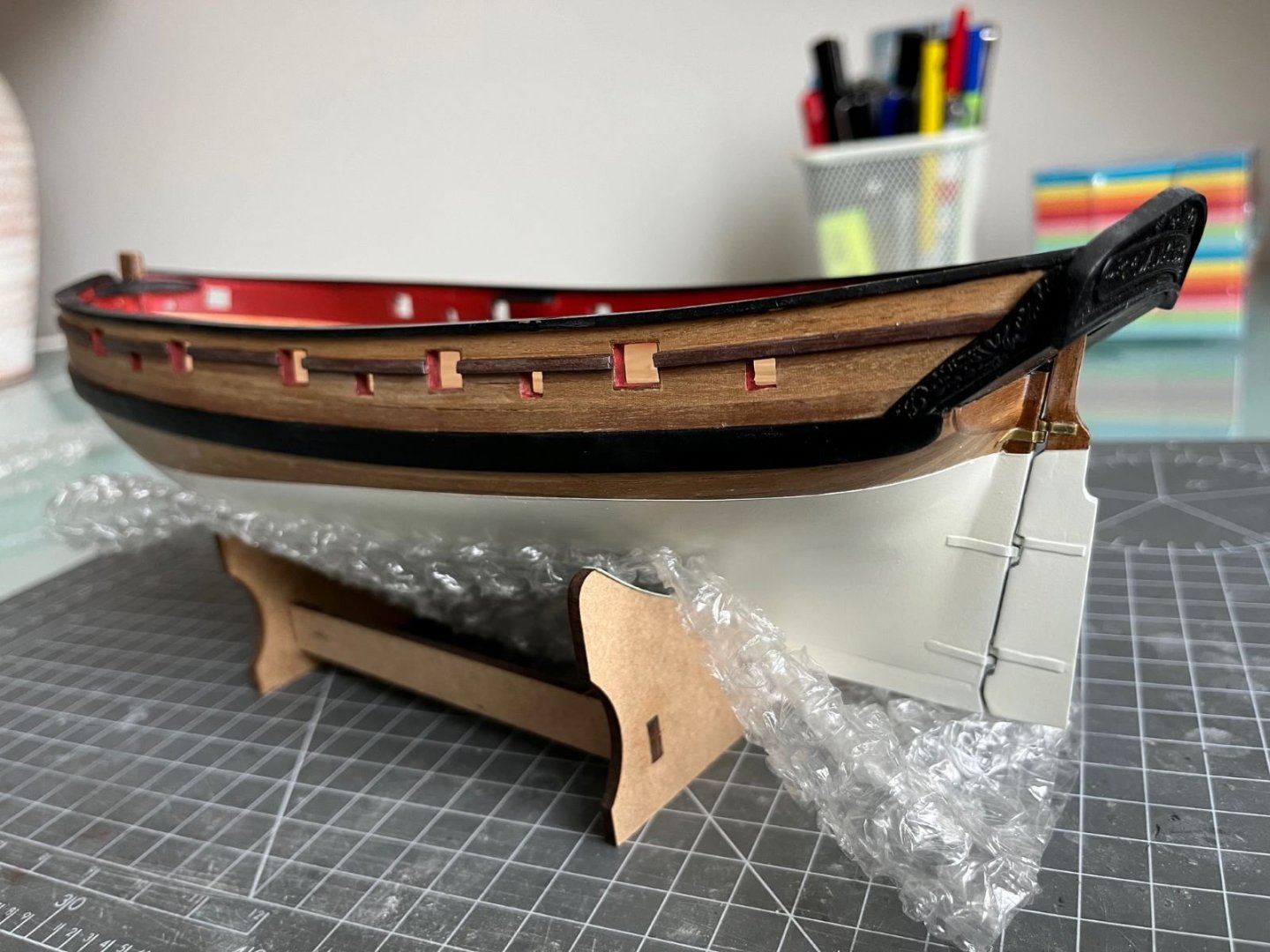-
Posts
712 -
Joined
-
Last visited
Content Type
Profiles
Forums
Gallery
Events
Everything posted by Danstream
-
Hi Fritz, I haven't implemented in full the tapering that you mentioned, although I read about it as well. The instructions don't mention it either. Best regards, Dan
- 87 replies
-
- Lady Nelson
- Amati
-
(and 1 more)
Tagged with:
-
@ccoyle, thank you Chris for your comment which I appreciate. Thank you @AJohnson and @vossiewulf for your input about my question. I wouldn't mind to buy new components if they look better. However, the issue mentioned above about the barrels centering the port holes needs indeed to be considered. I will reflect upon it, but perhaps I should just go on as others have already done it. Thank you and best regards, Dan
- 87 replies
-
- Lady Nelson
- Amati
-
(and 1 more)
Tagged with:
-
Hi, after a long absence, during which I tried to replicate the pumps on the deck, I am back with my final product. What bothered me most about the items provided with the kit was that the cylindrical parts are not circular, but have an oval shape (which is obviously a flaw of the mould). Hence, following the suggestion above from @vossiewulf and copying his design, I scratched build new pumps. However, I used different materials which I was more comfortable with. I obtained the body of the pump soldering a brass tube to a brass rod which was suitably shaped. The push rod is also made of brass. Other parts were done with styrene strips. Once assembled, this is how they look when placed on the deck: Painting followed: Not perfect and oversimplified, but I am satisfied with them. Next, I will be dealing with the cannons. The items coming with the kit, once freed from burrs, are quite nice, but I am a bit puzzled about their size. In fact, I have the impression that they are a bit undersized as I try to show in the following picture: The guy posed next to the cannon is about 1.66m tall (i.e. about 5.5 ft) and the cannon is barely touching his knees. It looks like a toy for him. Seen other problems encountered with the consistency of scale across this model, it could be that the entire model is not exactly 1:64 scale. Or it could be that my guy is too tall for his time. Is anyone in the forum have an opinion about that? I am pondering whether I should source bigger cannons. Thank you and best regards, Dan
- 87 replies
-
- Lady Nelson
- Amati
-
(and 1 more)
Tagged with:
-
@vossiewulf, thanks for your comment. Indeed, I am considering how to scratch built them in a simple way. @glbarlow, thank you for your comments. I consulted many times your build log to get ideas for mine. Indeed, you are absolutely right about the incorrect scale of the bits. I already tried to shorten it a bit and to slim down its webs. However, the problem is not solved fully. But, at the moment, I am a bit annoyed about modifying parts and I need to go on with the build. I already halted my very first built of the 'Mayflower' because of the too many modifications that I introduced that slowed down it too much. I will see whether I will come back to it later.
- 87 replies
-
- Lady Nelson
- Amati
-
(and 1 more)
Tagged with:
-
Hi all, I completed the elements of the deck furniture and glued them in place as shown below. The windlass needed some modifications as reported in previous posts and I scratch built an elementary ratchet-pawl mechanism. I also finalized the stern area with the new helm. Next, I should start working on the cannons and their carriages. I should also decide what to do with the hand pumps because I don't like the ones provided in the kit. I noticed that @vossiewulf scratch built his pumps in his log, but not having his skills, I need to figure out how to make a simpler version of them. Best regards, Dan
- 87 replies
-
- Lady Nelson
- Amati
-
(and 1 more)
Tagged with:
-
Gary, this build of yours is amazing and a great source of techniques and ideas, although I doubt I will ever manage to emulate them in full. The construction of the curved caprail is one that I will refer in future. As I said in other builds of yours, you have an ability to reproduce miniaturized things with incredible realism. I keep following in awe from the back row. Best regards, Dan
-
Thank you @vossiewulf, @flyenrw, @Dr PR for your very kind messages! I appreciated your evaluations. Thanks also to those that hit the 'like' button! 🙏 Best regards, Dan
- 87 replies
-
- Lady Nelson
- Amati
-
(and 1 more)
Tagged with:
-
Hi, after weeks I am back to my Lady N. and after having glued the gratings, I started to populate her deck (but no glue yet). I embellished a bit the otherwise spartan companionway: I am still undecided whether I will keep the orientation of the picture above (which is the way indicated in the kit drawings) or rotate it by 180 deg with the doors facing stern. Then, I tackled the horizontal windlass, the model of which, as included in the kit, is a bit questionable. I followed what was done by @flyenrw in his build, i.e. I sourced a different model from the Amati catalog which is closer to the type seen in epoch models (longer with a slender shape). This type, though, is still functionally flawed, hence I had to taking it apart and introduce some modifications: After having squared the holes for the poles, I removed its central portion and built a ratchet wheel out of styrene cards. After re-assembling it, this is how it looks once posed in its location: Next, I will prime these new parts and paint them red. Best regards, Dan
- 87 replies
-
- Lady Nelson
- Amati
-
(and 1 more)
Tagged with:
-
Get better soon. Curious to see your new lathe. Good luck with it! Dan
- 714 replies
-
- lady nelson
- victory models
-
(and 1 more)
Tagged with:
-
Nice progress Mike. Indeed, the first scheme above is a bit challenging. I would have tackled it with a 'reverse mottling'. I know, it sounds late now, but you could paint everything with the sand color of the mottles and then stick on it blobs of blu-tack (or masking fluid). Then spray the green paints. If you go this way, before committing the model, I recommend to test it first on a scrap part. Good luck anyway and keep with the good working. Greetings, Dan
-
Finally, I am posting my first instalment of the year. It is just a small step, but I am posting it anyway. I corrected the overspray of the light grey paint that I had on the bow (there is still a small ridge along the demarcation of the paint that I have to correct). I also painted black the caprail with its accessories and mounted the two catheads the shaping of which fought me all the way because of the soft quality of the wood they are made of. The modified structure for supporting the bowsprit was also painted and now just dry fitted on its place: Next, I should install the horizontal windlass, but having ordered a different type from Amati, I need to wait a bit until I receive it. For the moment, will be working on the gratings. Greetings, Dan
- 87 replies
-
- Lady Nelson
- Amati
-
(and 1 more)
Tagged with:
-
You are proceeding at marching pace with your Lady and the details you are implementing one after the other are amazing to me. Instead, I am stuck with my models. Cheers, Dan.
- 714 replies
-
- lady nelson
- victory models
-
(and 1 more)
Tagged with:
-
Indeed, sorry for the misunderstanding, my naval terminology is leaves much to be desired, now I understand why you need nails. In that case, please forget my comment. Cheers, Dan
- 714 replies
-
- lady nelson
- victory models
-
(and 1 more)
Tagged with:
-
@vossiewulf, Unfortunately, I didn't take pictures of the chaiplates, but I have one of the pinrail which was attached with the same system: For the chainplates, I drilled through the thickness of a chainplate side to side with a drill of the same dia. of the tube. The external diameter of these tubes can be found with increments of 0.1 mm: https://www.albionalloys.com/en/brass-tube/ . They have also brass rods, but I like using the tubes better. Here, I find an assortment of these tubes and rods in many hobby shops. Best regards, Dan
- 714 replies
-
- lady nelson
- victory models
-
(and 1 more)
Tagged with:
-
@vossiewulf, your closeup pictures show a level of details which is amazing. Just a suggestion, for the chainplates, instead of nails, I used pins made from a brass tube 0.7mm dia. from Albion Alloys. In this way, I could accommodate them within the thickness of the chainplates and conveniently trim their length as needed. Best regards, Dan
- 714 replies
-
- lady nelson
- victory models
-
(and 1 more)
Tagged with:
-
Back to finishing the hull of my Lady N. I retouched the black paint of the stern and removed the paint from the friezes and the nameplate. I pinned the chain plates on the sides: I installed a shoulder to better support the bowsprit, as seen in other models and also in period models: Finally, bitts and posts for the culverins were glued in place onto the caprails. Next, the catheads will be attached to the bulwarks and the black paint will be finalized. Best regards, Dan
- 87 replies
-
- Lady Nelson
- Amati
-
(and 1 more)
Tagged with:
-
Happy the you resumed this build log. Your sharp work provides lot of inspirational ideas. Looking forward to seeing the continuation of your build. Best regards, Dan
- 714 replies
-
- lady nelson
- victory models
-
(and 1 more)
Tagged with:
-
Thank you Robert, happy that I could be of help, both with my Lady and with my aircraft models. The decals of my F-15 are from Dutch Decals, a company in NL specialized in Dutch subjects, see, f.i.: https://www.scalemates.com/nl/kits/dutch-decal-dd48074-f-15-usafe-hawk-75-dh-82--1220448 usually, their quality is very good. By the way, the orange banner of the fins, is a colorful exception to the specification for using only grey tones to honor the country hosting the squadron. Looking forward to seeing your next builds. Cheers, Dan
- 87 replies
-
- Lady Nelson
- Amati
-
(and 1 more)
Tagged with:
-
Hi all, I went on with finishing the bottom of the hull. I started with taping the waterline with a flexible Tamiya tape. Apparently, according to the plans, the waterline doesn't have to run parallel to the keel, but should form quite an angle with it. After all my efforts to get a reasonable layout of the planks, I feel a bit of a pain in obliterating most of it. I began with filling the most obvious cracks and then I sprayed a white primer to uniform the surface. To render the whitish coat of the hull, I used a Gunze paint denominated H311 Gray FS36622 which I picked from my set of airplane colors (this is a tint which was part of those used by the US Air Force in the past) and which seems to a newbie like me to fit quite well the bill. After removing the masking tapes, there are few spots of overspray to be corrected. In addition the tapes have lifted few spots of the black finish which I will address later. All in all, the result is not bad as it can be seen from the overall views: That's all for now, next I will work on the furniture of the deck. Best regards, Dan
- 87 replies
-
- Lady Nelson
- Amati
-
(and 1 more)
Tagged with:
About us
Modelshipworld - Advancing Ship Modeling through Research
SSL Secured
Your security is important for us so this Website is SSL-Secured
NRG Mailing Address
Nautical Research Guild
237 South Lincoln Street
Westmont IL, 60559-1917
Model Ship World ® and the MSW logo are Registered Trademarks, and belong to the Nautical Research Guild (United States Patent and Trademark Office: No. 6,929,264 & No. 6,929,274, registered Dec. 20, 2022)
Helpful Links
About the NRG
If you enjoy building ship models that are historically accurate as well as beautiful, then The Nautical Research Guild (NRG) is just right for you.
The Guild is a non-profit educational organization whose mission is to “Advance Ship Modeling Through Research”. We provide support to our members in their efforts to raise the quality of their model ships.
The Nautical Research Guild has published our world-renowned quarterly magazine, The Nautical Research Journal, since 1955. The pages of the Journal are full of articles by accomplished ship modelers who show you how they create those exquisite details on their models, and by maritime historians who show you the correct details to build. The Journal is available in both print and digital editions. Go to the NRG web site (www.thenrg.org) to download a complimentary digital copy of the Journal. The NRG also publishes plan sets, books and compilations of back issues of the Journal and the former Ships in Scale and Model Ship Builder magazines.


.thumb.jpg.c459ce4140b54c12eddb8eedfd446df3.jpg)


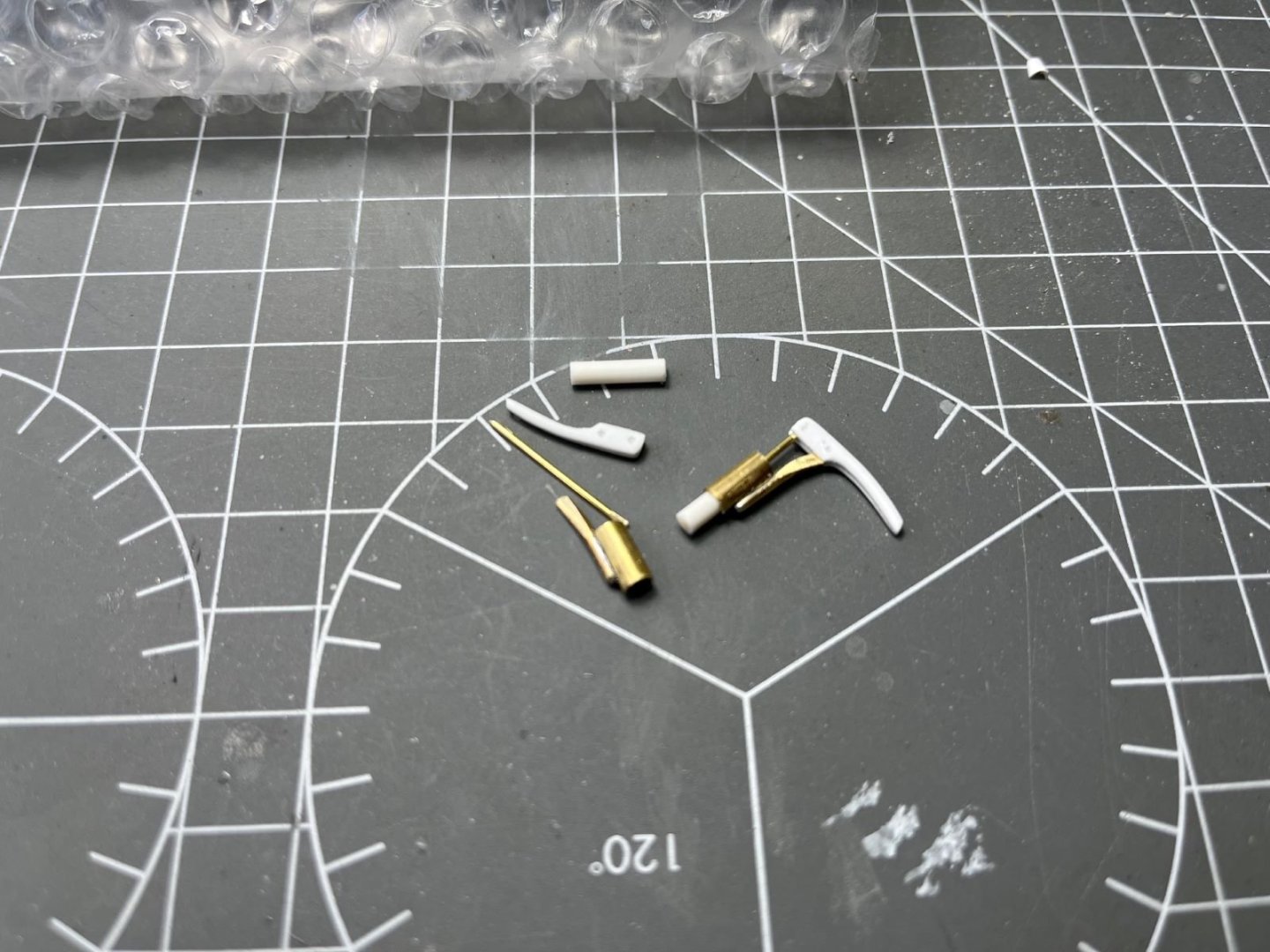
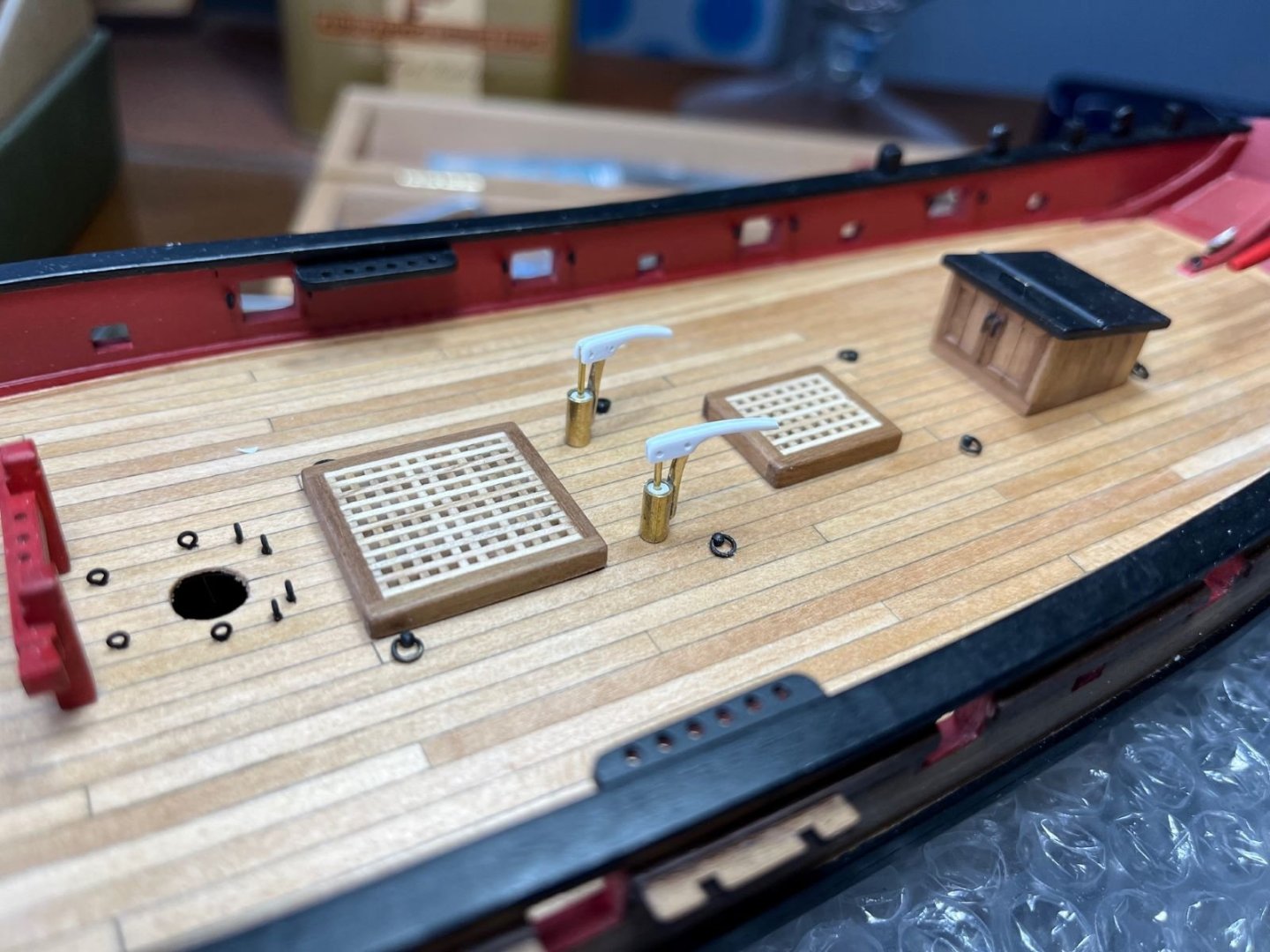
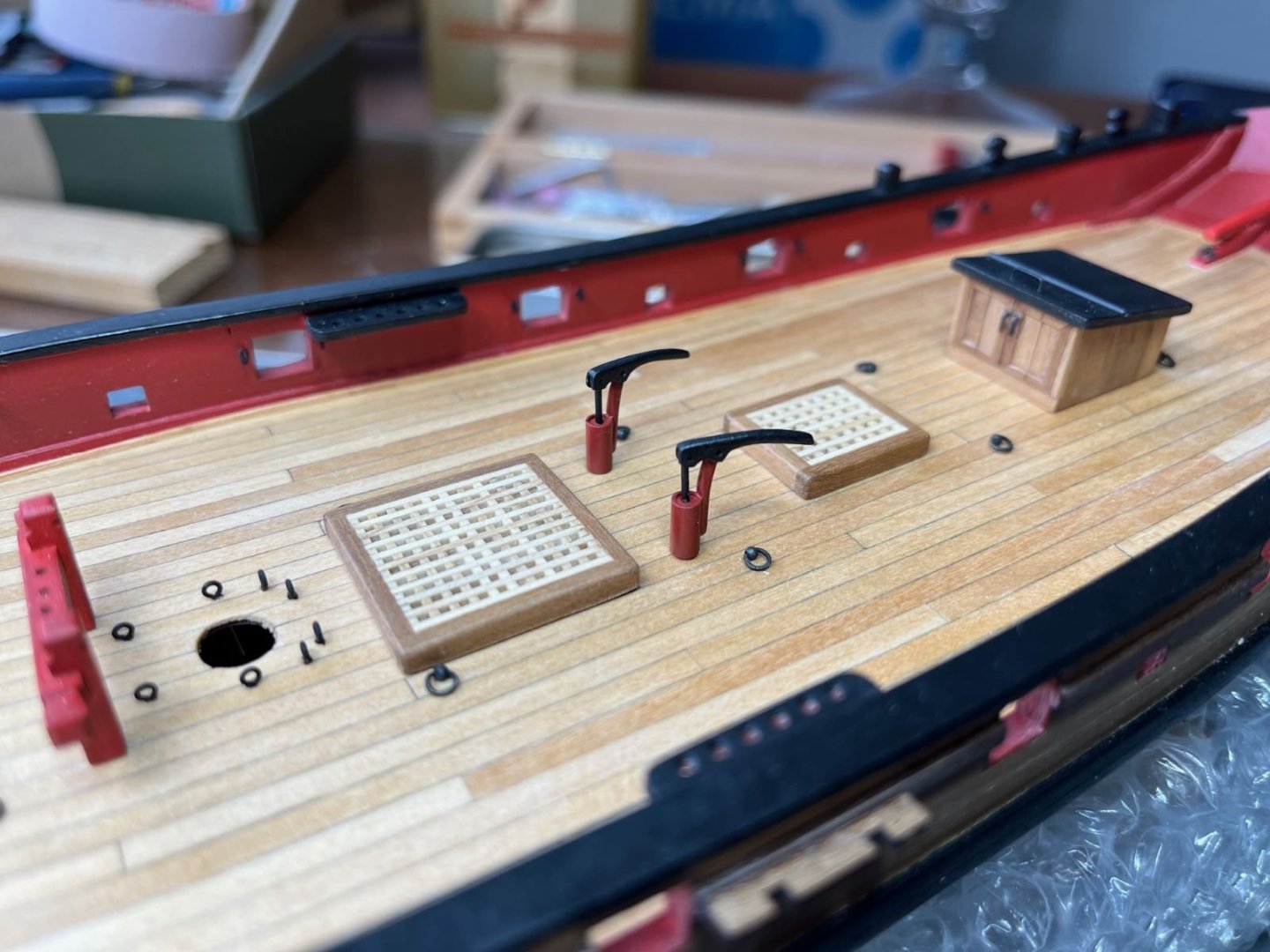
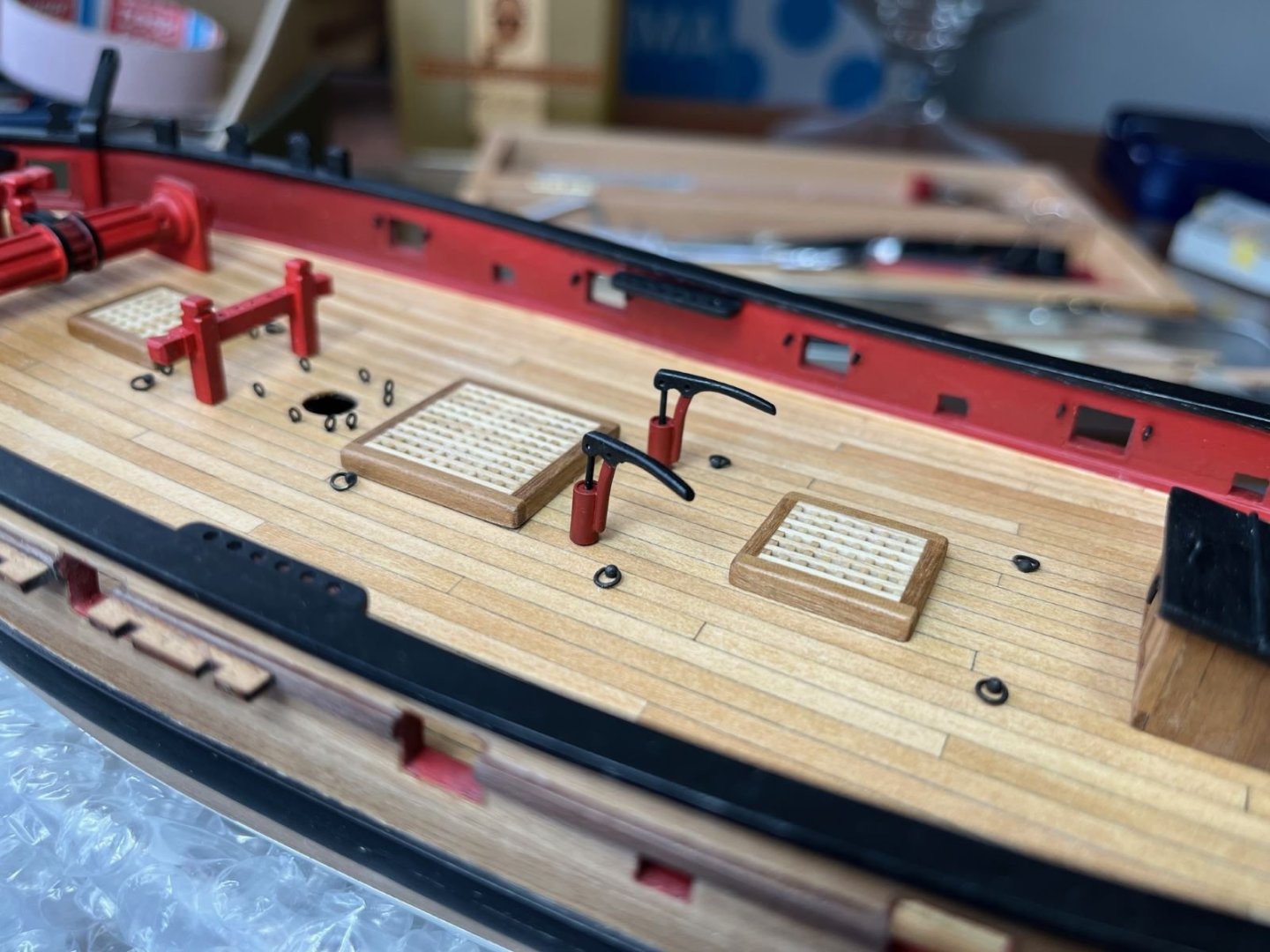
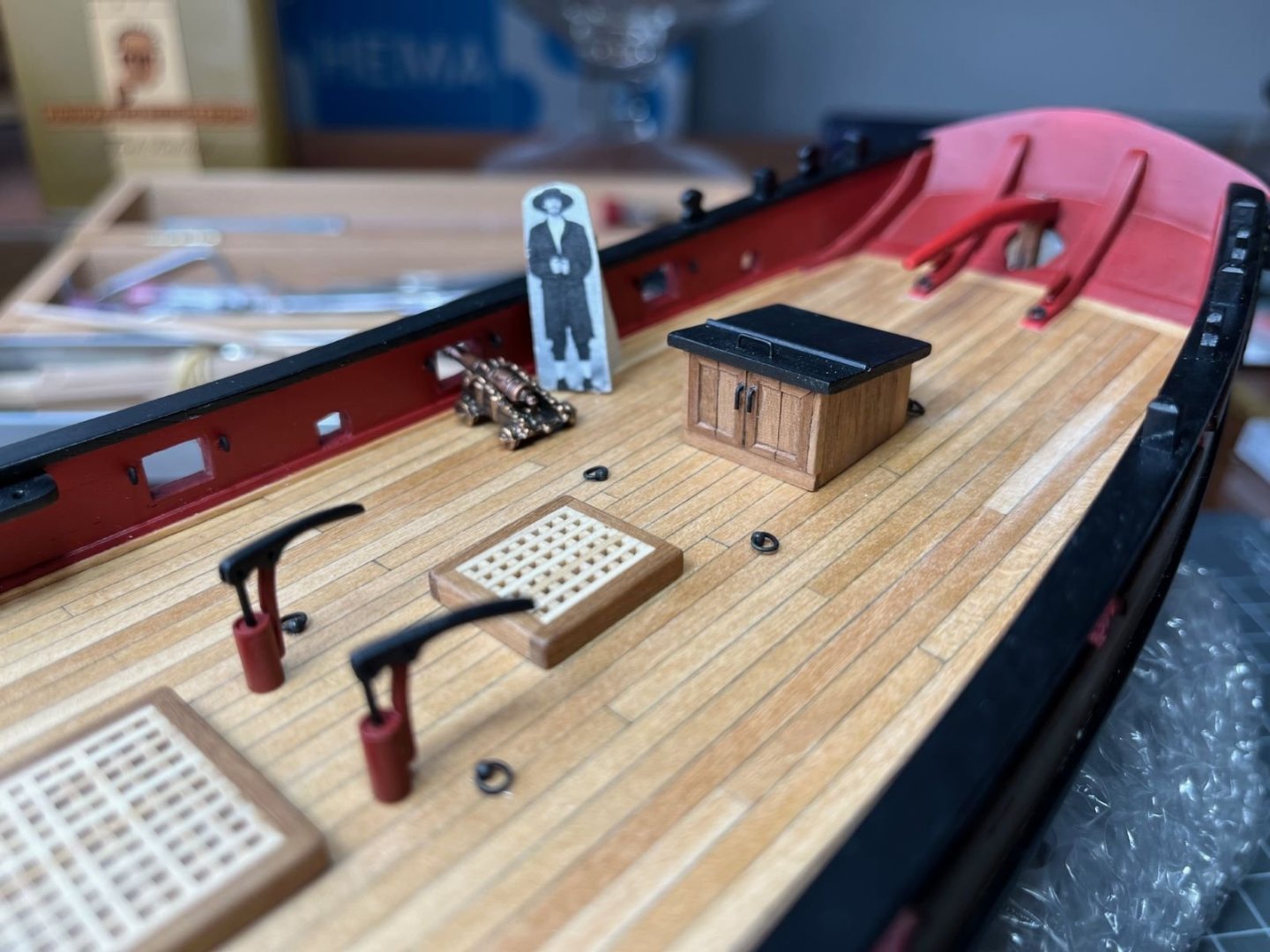
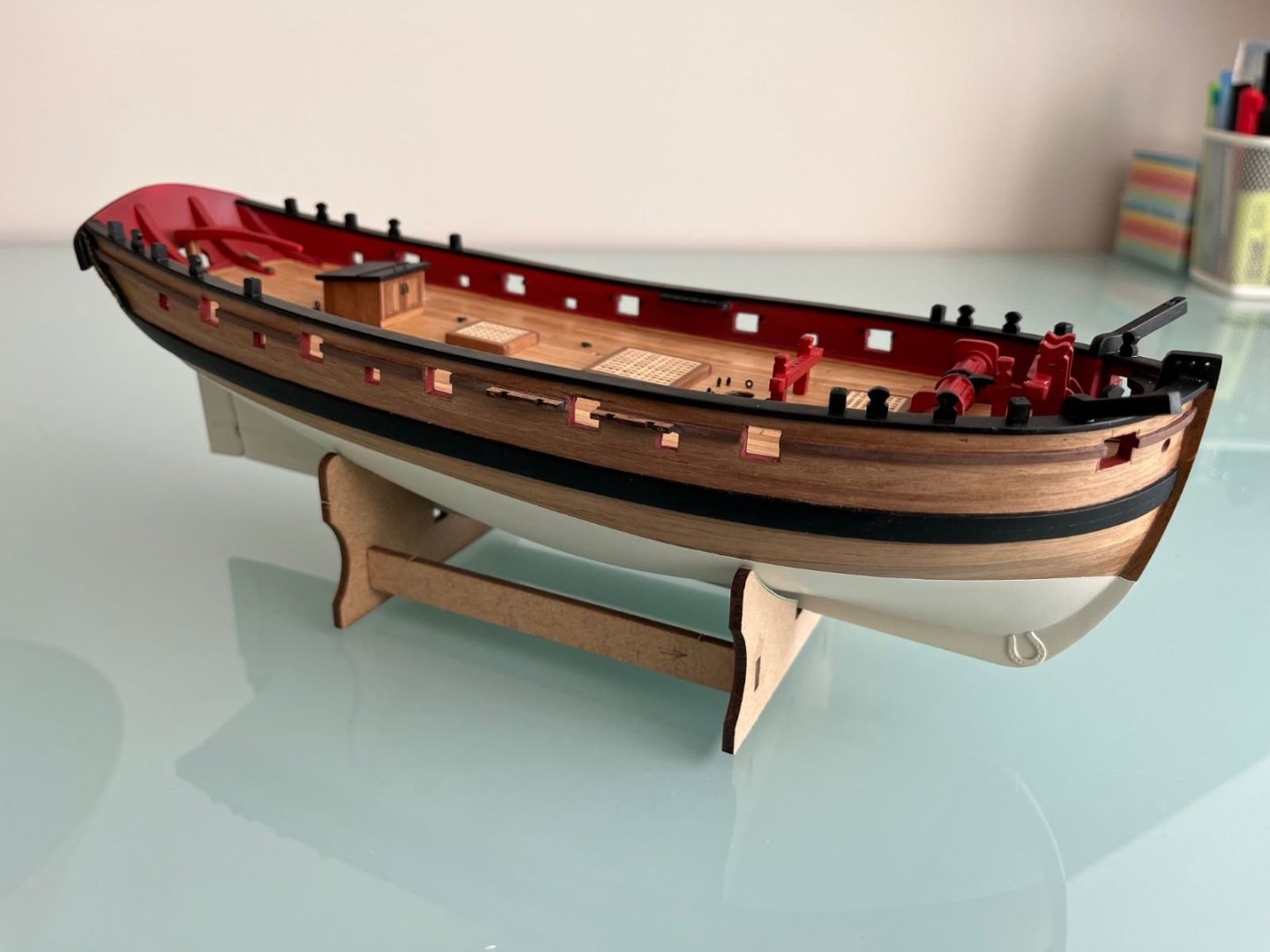
.thumb.jpg.30679492834f85433930c3723fa5da92.jpg)
